Last Updated on April 12, 2021
…continued from Walking Through Italy: Highlights From The Via Amerina, Part I– my Via Amerina hike from Assisi to Rome.
The Via Amerina hike continues
After the first big leg of the Via Amerina hike, from Castel dell’Aquila to Amelia, and a good night’s sleep (we were all so tired that we fell asleep as soon as our heads hit the pillow), and a typical Italian breakfast (a cappuccino and a sweet pastry), we started the walk to our next destination: Orte, around 10 miles (17 kilometers) south of Amelia. Like the day before, we traversed vineyards and fields, huffing and puffing as we climbed the hills. On this part of the Via, we also passed an open-air chapel, a reminder that we weren’t just on a random hike through the countryside, but on a pilgrimage.
Like the day before, we traversed vineyards and fields, huffing and puffing as we climbed the hills. On this part of the Via, we also passed an open-air chapel, a reminder that we weren’t just on a random hike through the countryside, but on a pilgrimage.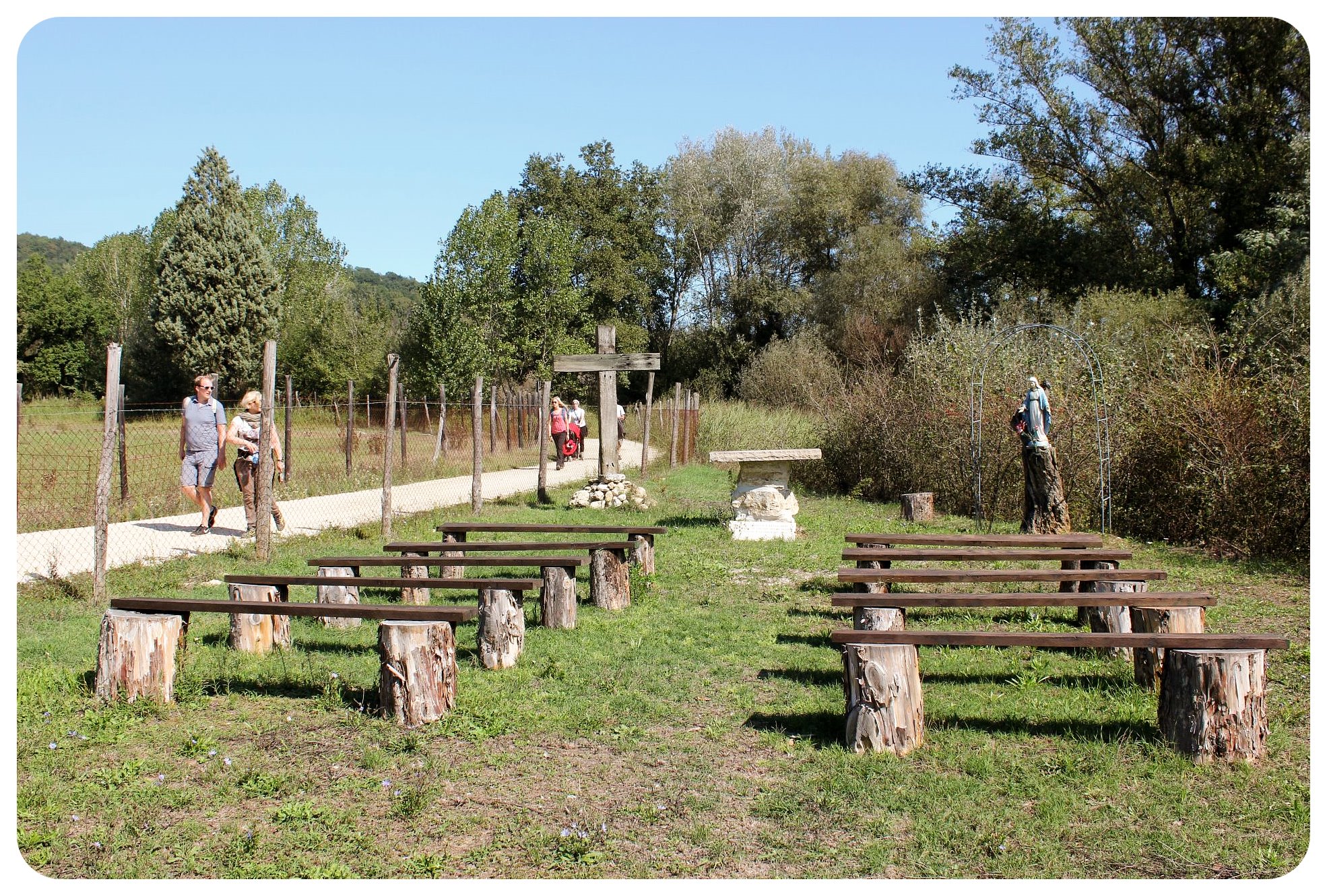
Orte: Another Enchanting Medieval Hilltop Town
The last part of the Via Amerina hike was the most challenging: We could see Orte majestically crowning the top of a tuff cliff front of us, and with a lot of moaning, our legs eventually carried us up the hill, reaching our first stop in the Latium region.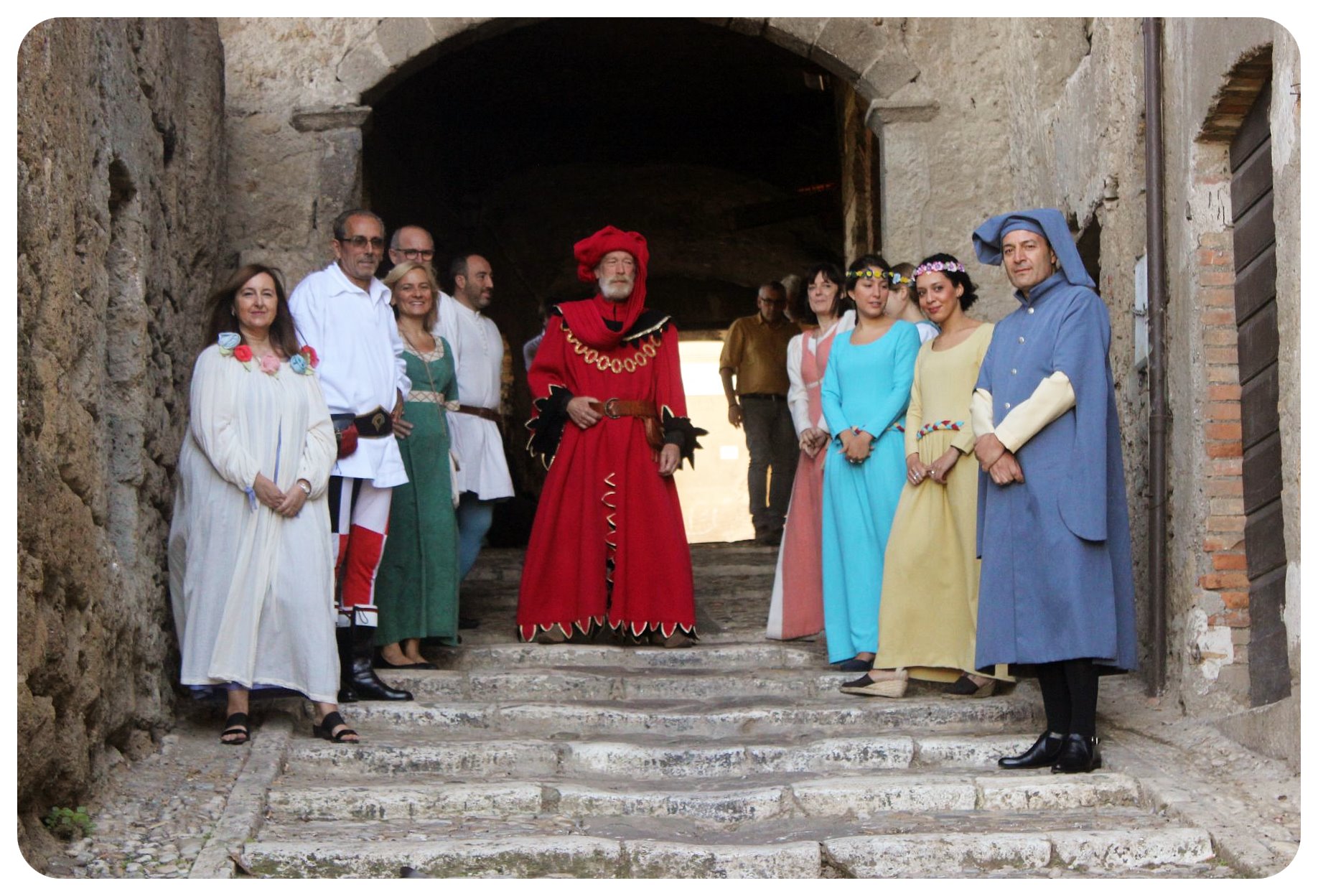 We entered another stunning medieval town through one of several massive stone gates, hundreds of years old, and rested at the town square for a while, watching another flag-twirling performance, before we explored Orte’s well-preserved ‘underground’.
We entered another stunning medieval town through one of several massive stone gates, hundreds of years old, and rested at the town square for a while, watching another flag-twirling performance, before we explored Orte’s well-preserved ‘underground’.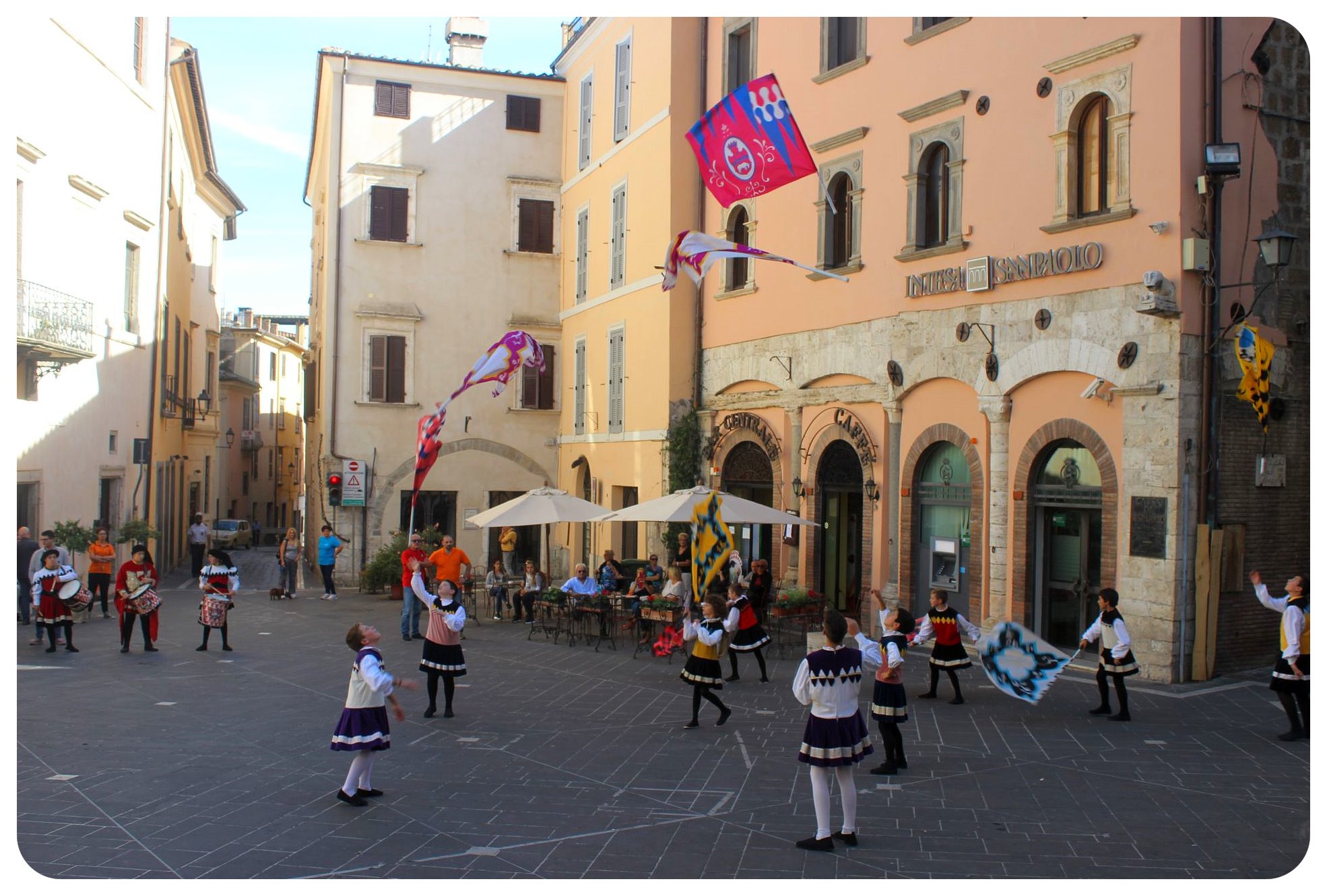 Because the town sits on top of a cliff, the Romans built many tunnels, caverns and cisterns underneath the city, some of which can be visited with a tour guide.
Because the town sits on top of a cliff, the Romans built many tunnels, caverns and cisterns underneath the city, some of which can be visited with a tour guide.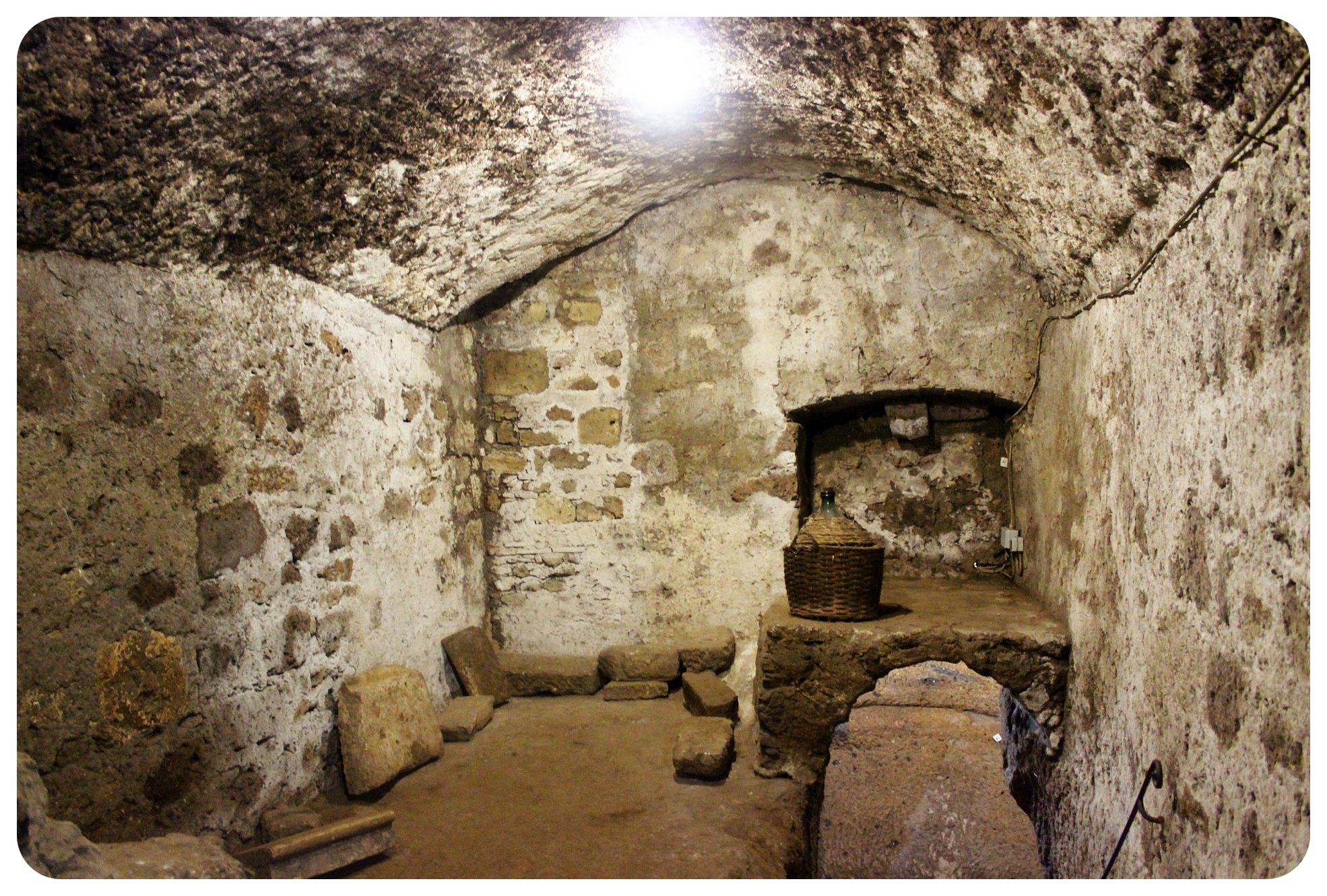 Orte is not just worth a visit for its underground relics though – the town itself is stunning. Just like with medieval churches, I don’t think I’ll ever tire of wandering through medieval towns, marvel at the imposing stone buildings, follow the narrow lanes to see where they lead me, and imagining what life must have been like here in medieval times. It seems like not much has changed since then, at least on the outside.
Orte is not just worth a visit for its underground relics though – the town itself is stunning. Just like with medieval churches, I don’t think I’ll ever tire of wandering through medieval towns, marvel at the imposing stone buildings, follow the narrow lanes to see where they lead me, and imagining what life must have been like here in medieval times. It seems like not much has changed since then, at least on the outside.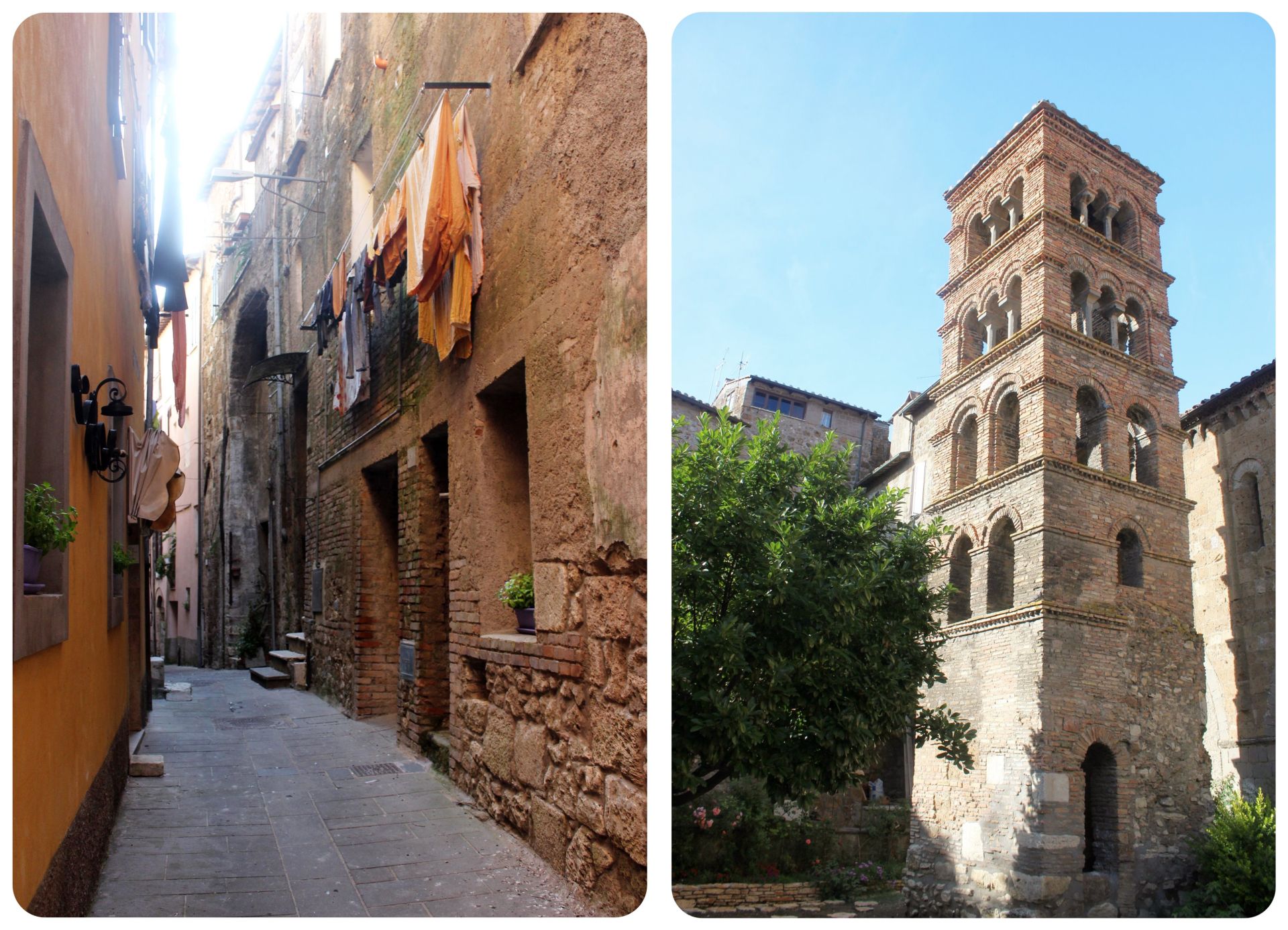 Only five miles south of Orte, we passed through Vasanello, another quaint medieval town with a small castle and a beautiful 13th century Romanesque bell tower, which was built with stones that were taken from the Via Amerina.
Only five miles south of Orte, we passed through Vasanello, another quaint medieval town with a small castle and a beautiful 13th century Romanesque bell tower, which was built with stones that were taken from the Via Amerina.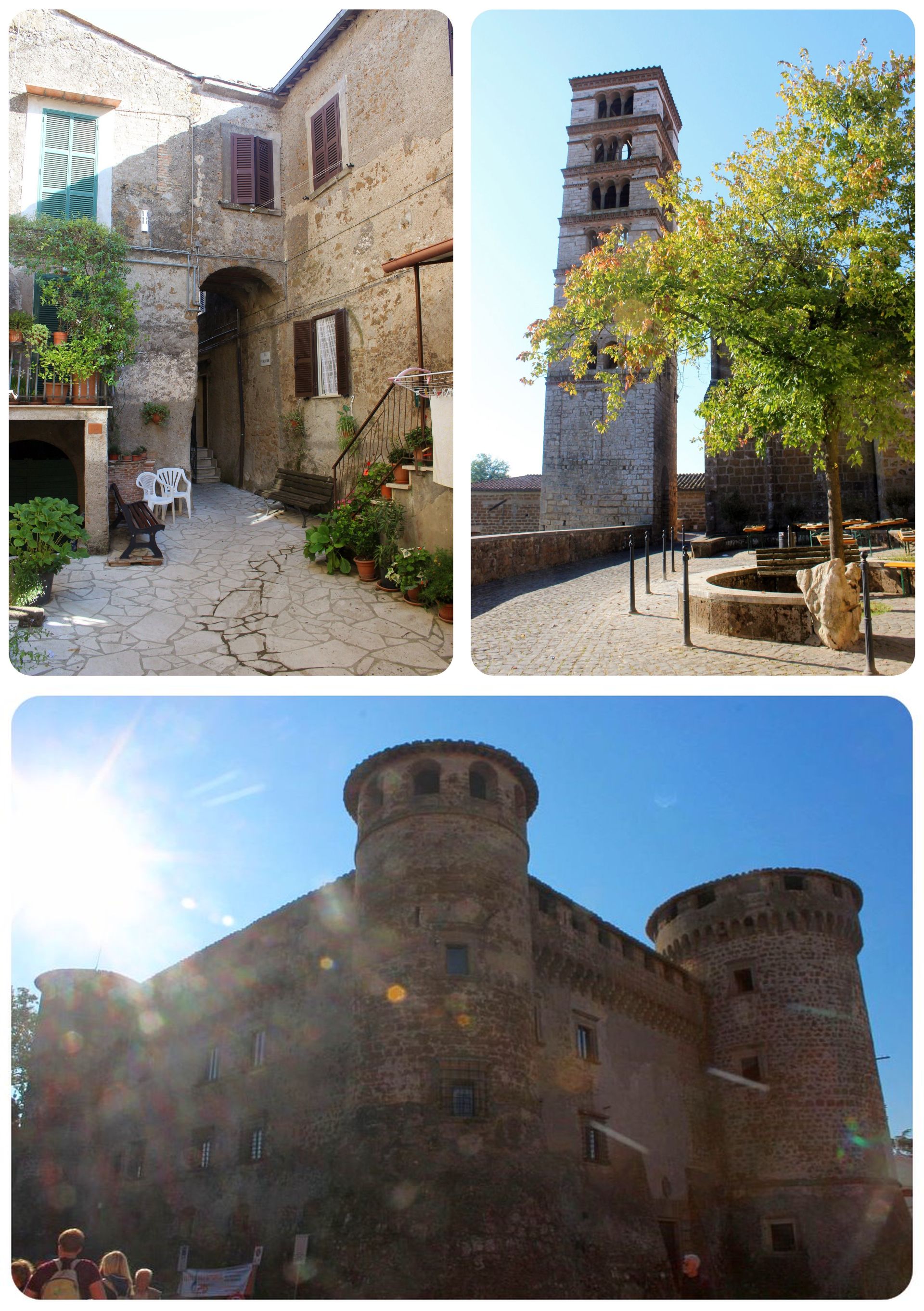 Another highlight of the Via was the leg between Morticelli, where we passed a small necropolis, the Necropoli di Morticelli, where tombs have been carved into the tuff, and Corchiano, where we traversed the Forre di Corchiano, a narrow gorge that follows the Rio Fratta.
Another highlight of the Via was the leg between Morticelli, where we passed a small necropolis, the Necropoli di Morticelli, where tombs have been carved into the tuff, and Corchiano, where we traversed the Forre di Corchiano, a narrow gorge that follows the Rio Fratta.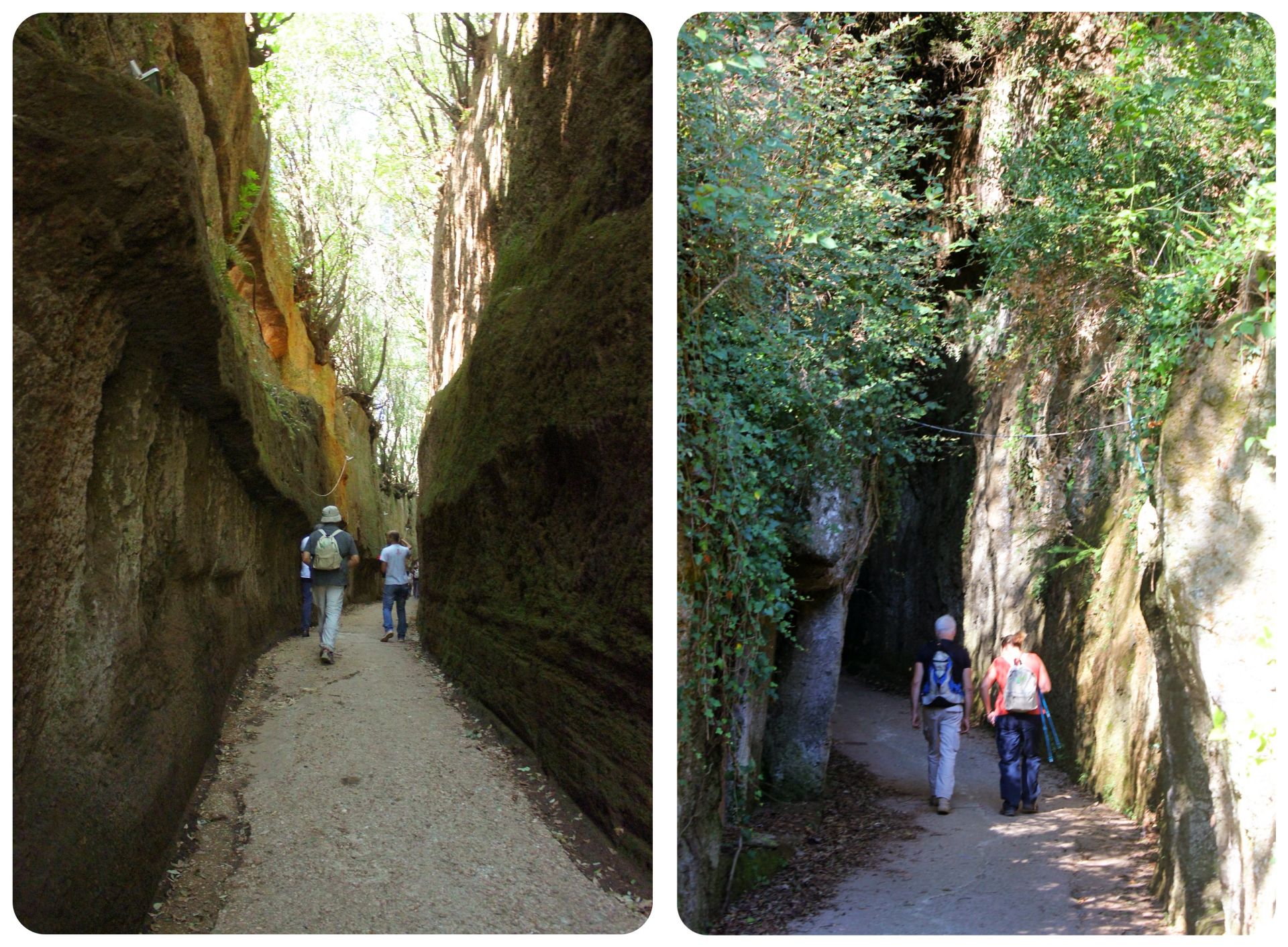 On that stretch of the Via Amerina hike, we passed a beautiful arched Roman Bridge which was still intact, and several caves with Byzantine graves and tombs. The scenery here is completely different from what we’d seen in Umbria.
On that stretch of the Via Amerina hike, we passed a beautiful arched Roman Bridge which was still intact, and several caves with Byzantine graves and tombs. The scenery here is completely different from what we’d seen in Umbria.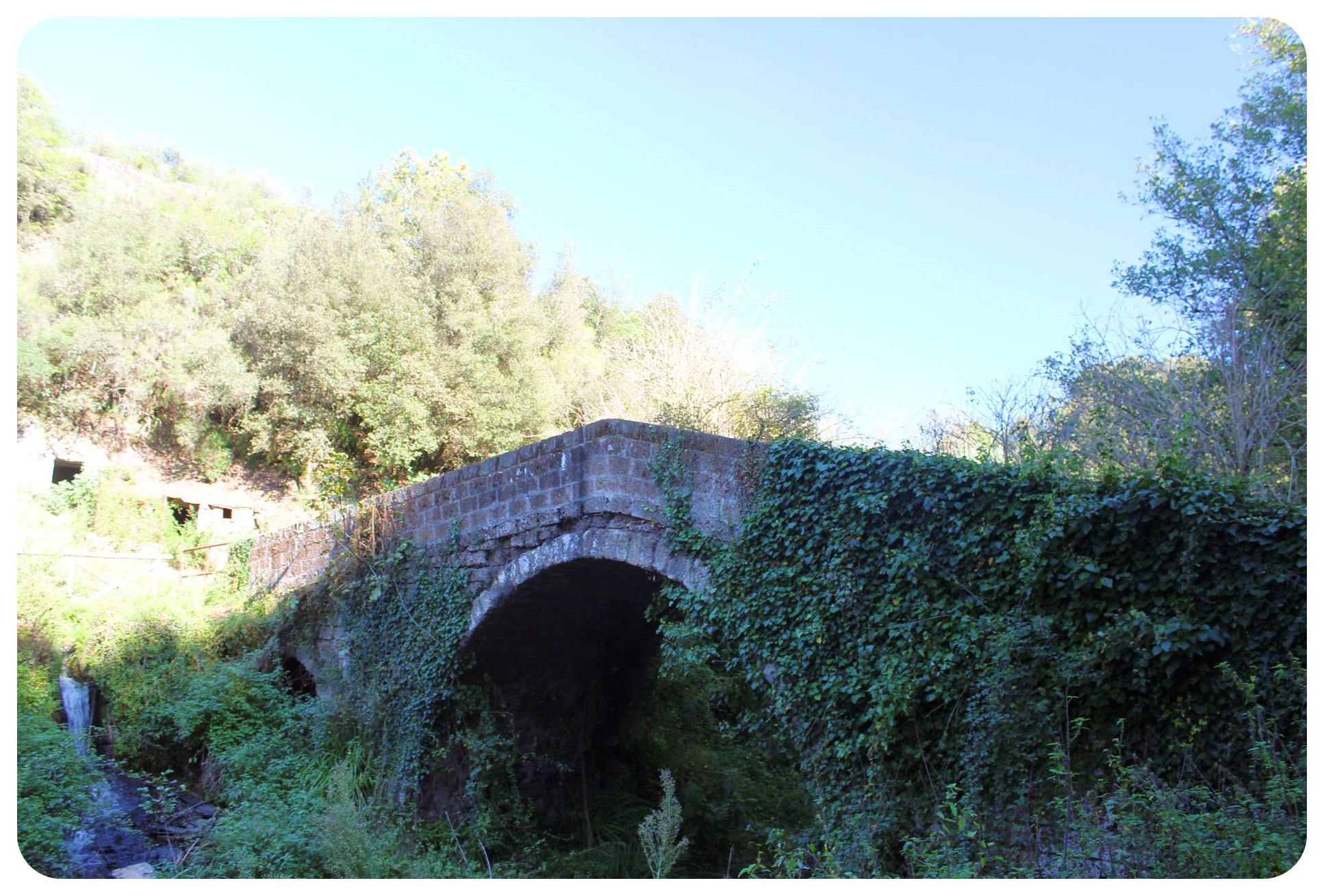
The Natural Monuments Of Latium
Instead of rolling hills, we were walking through thick forest, and we learned that the Forre Di Corchiano is part of the WWF L’Oasi di Pian Sant’Angelo, a 254-hectare large natural monument, rewarded this title thanks to its outstanding natural beauty and unique archeological finds.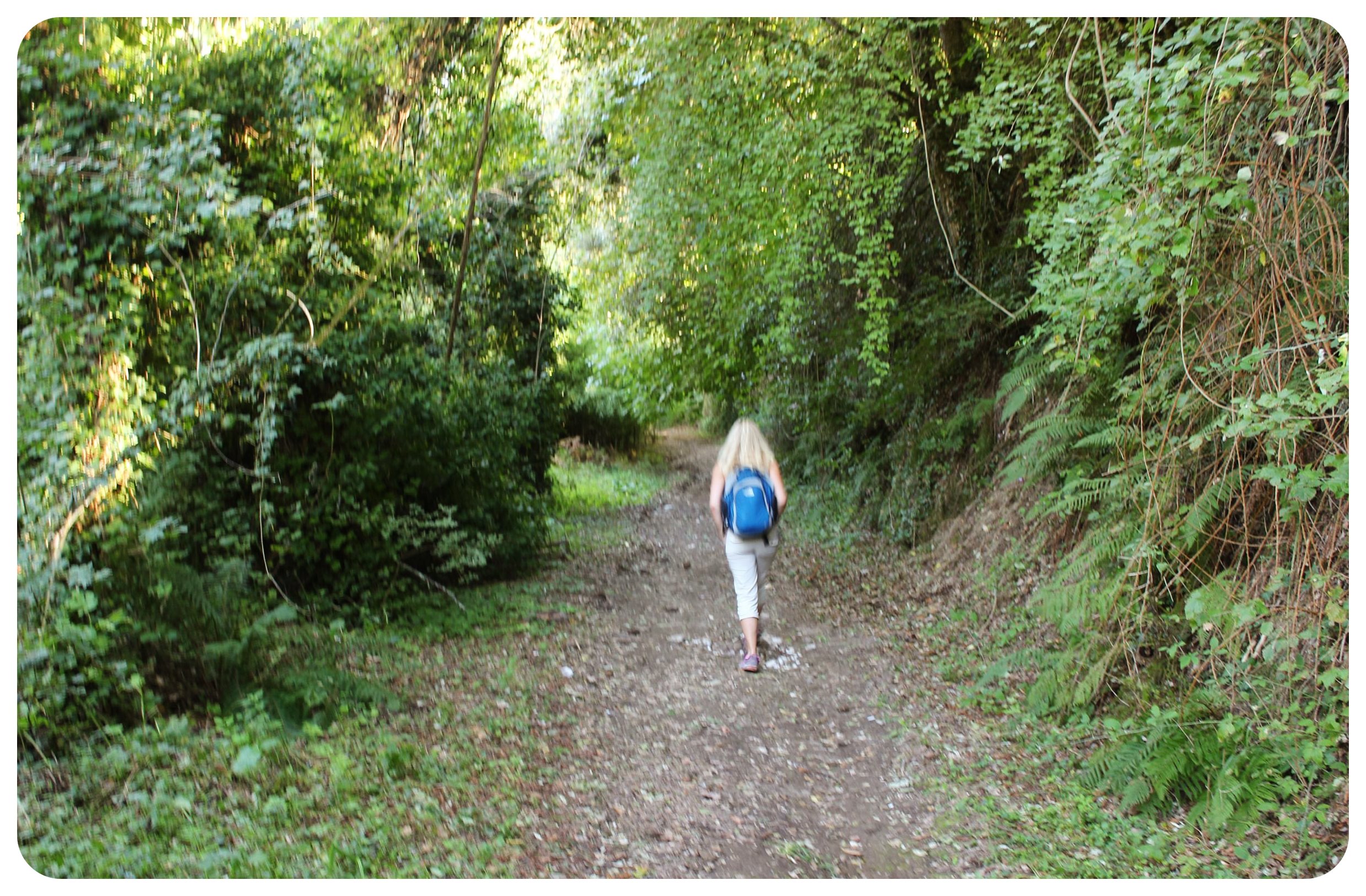 We interrupted the Via Amerina hike for a quick visit to Civita Castellana, about 4 miles (6 kilometers) east of Falerii Novi, a town also founded by the Falisci, who called it Falerii. Civita Castellana is worth a visit not only for its charming town center, but for its attractive Cathedral, also known as Il Duomo, which has some remarkable geometrical floor mosaics and which has a unique Cosmatesque façade (signed and dated in gold mosaic tiles, dating back to 1210), and Forte Sangallo, the fortress, which was built by Pope Alexander VI. The fortress houses an Etruscan Museum with a considerable collection.
We interrupted the Via Amerina hike for a quick visit to Civita Castellana, about 4 miles (6 kilometers) east of Falerii Novi, a town also founded by the Falisci, who called it Falerii. Civita Castellana is worth a visit not only for its charming town center, but for its attractive Cathedral, also known as Il Duomo, which has some remarkable geometrical floor mosaics and which has a unique Cosmatesque façade (signed and dated in gold mosaic tiles, dating back to 1210), and Forte Sangallo, the fortress, which was built by Pope Alexander VI. The fortress houses an Etruscan Museum with a considerable collection.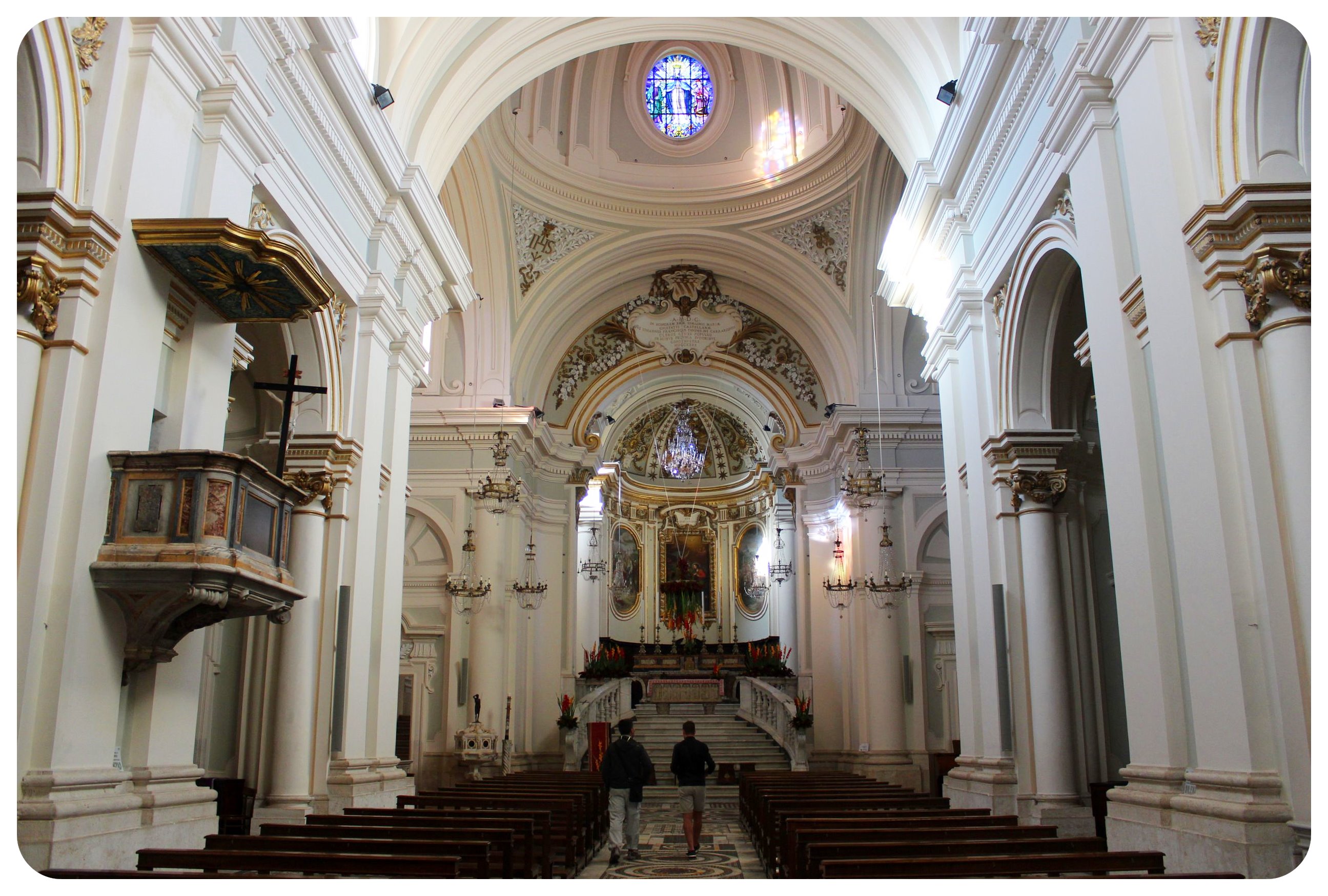 After spending the night in Civita Castellana, we continued our walk southwards the next morning – 7.5 miles (12 kilometers) to the town of Nepi.
After spending the night in Civita Castellana, we continued our walk southwards the next morning – 7.5 miles (12 kilometers) to the town of Nepi.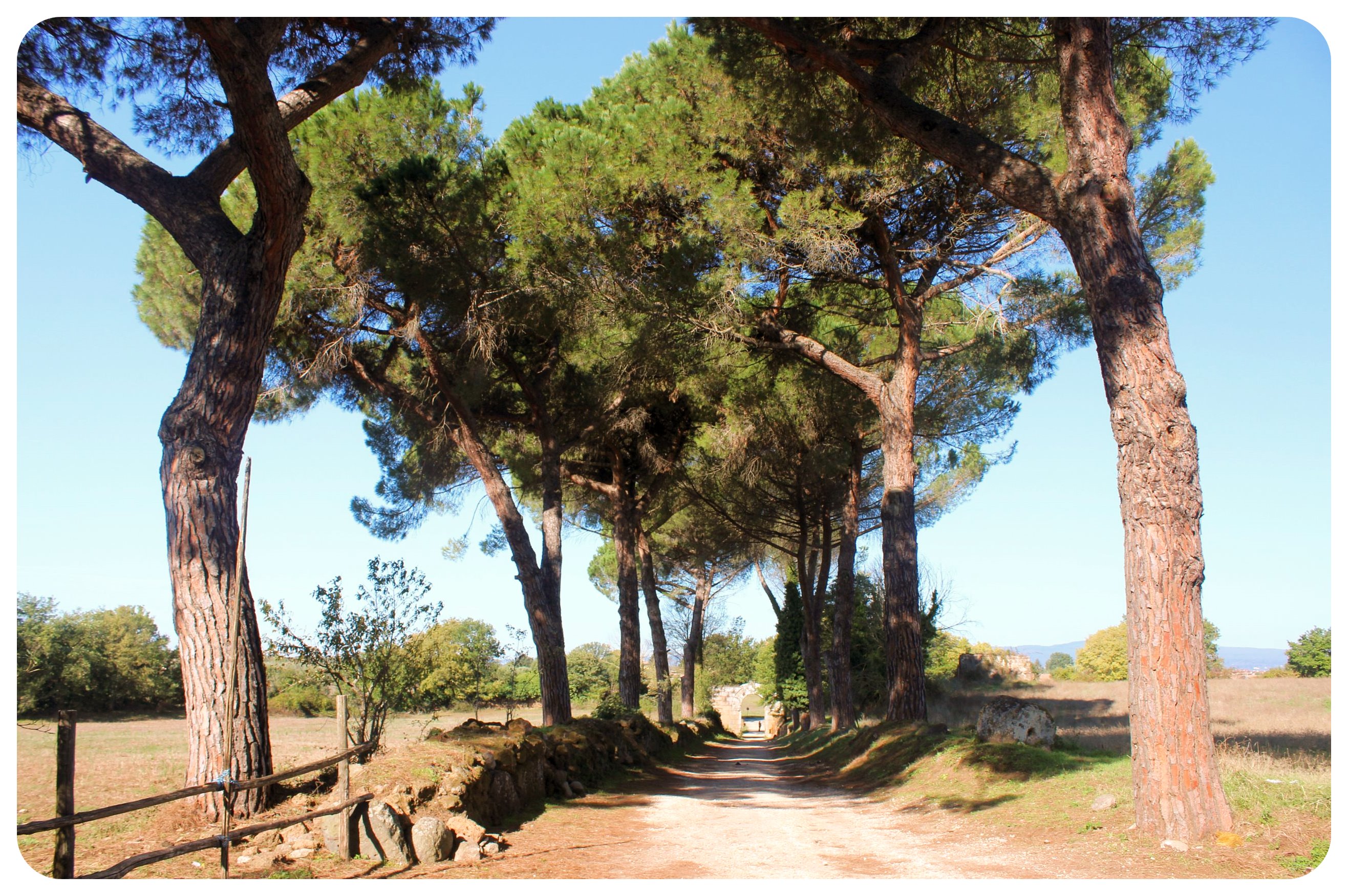 We started the day on a particularly lovely section of the route, which led us through hazelnut orchards, the ground filled with hazelnuts that were going to be used for one of Ferrero’s irresistible hazelnut chocolate creations, until we reached the ruins of the walled settlement of Falerii Novi.
We started the day on a particularly lovely section of the route, which led us through hazelnut orchards, the ground filled with hazelnuts that were going to be used for one of Ferrero’s irresistible hazelnut chocolate creations, until we reached the ruins of the walled settlement of Falerii Novi.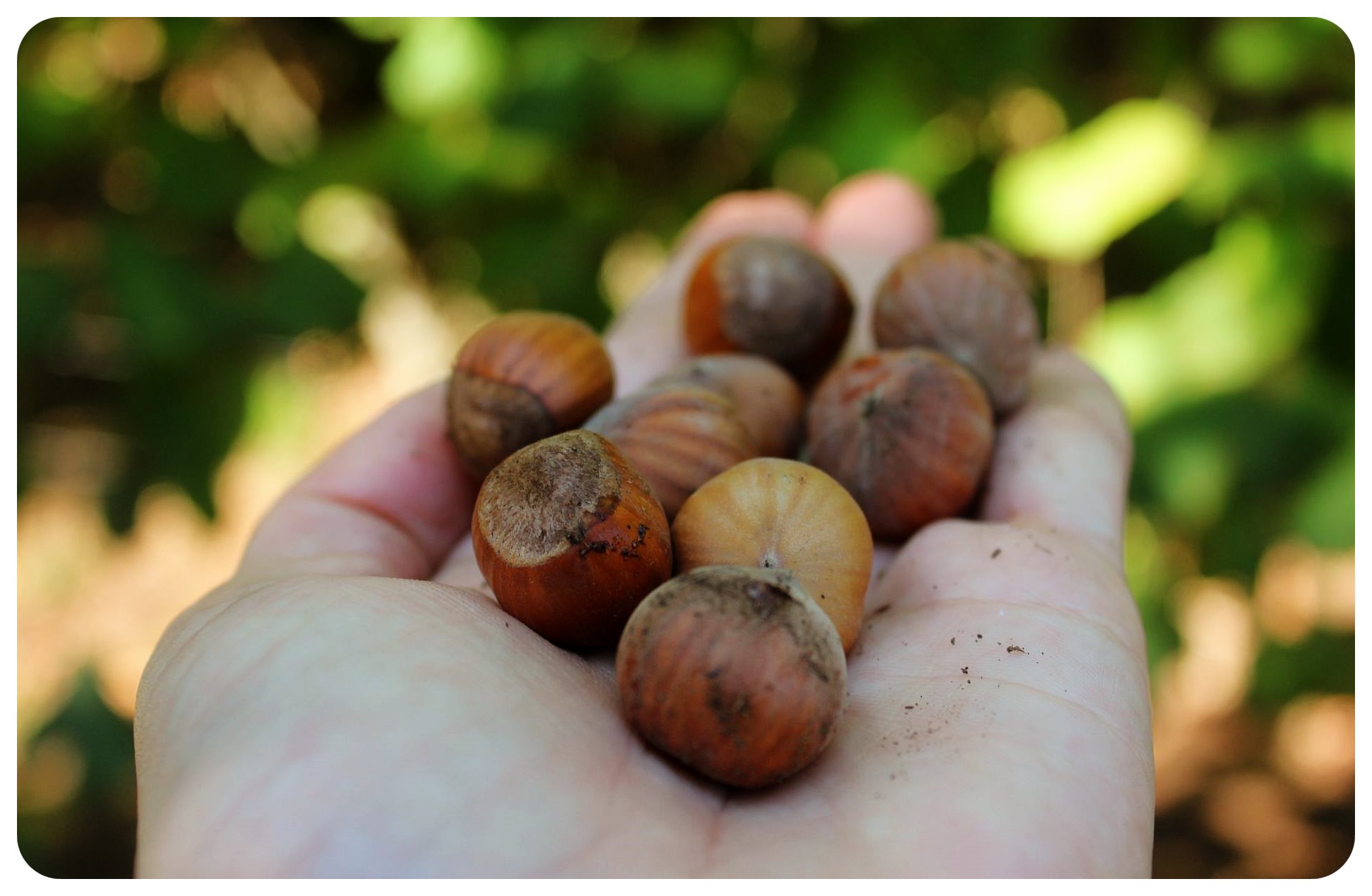 Created by the Romans, the stone entrance gate of Falerii Novi is still intact, and the striking church of Santa Maria of Falerii is still in great condition next to the ruins of Falerii Novi.
Created by the Romans, the stone entrance gate of Falerii Novi is still intact, and the striking church of Santa Maria of Falerii is still in great condition next to the ruins of Falerii Novi.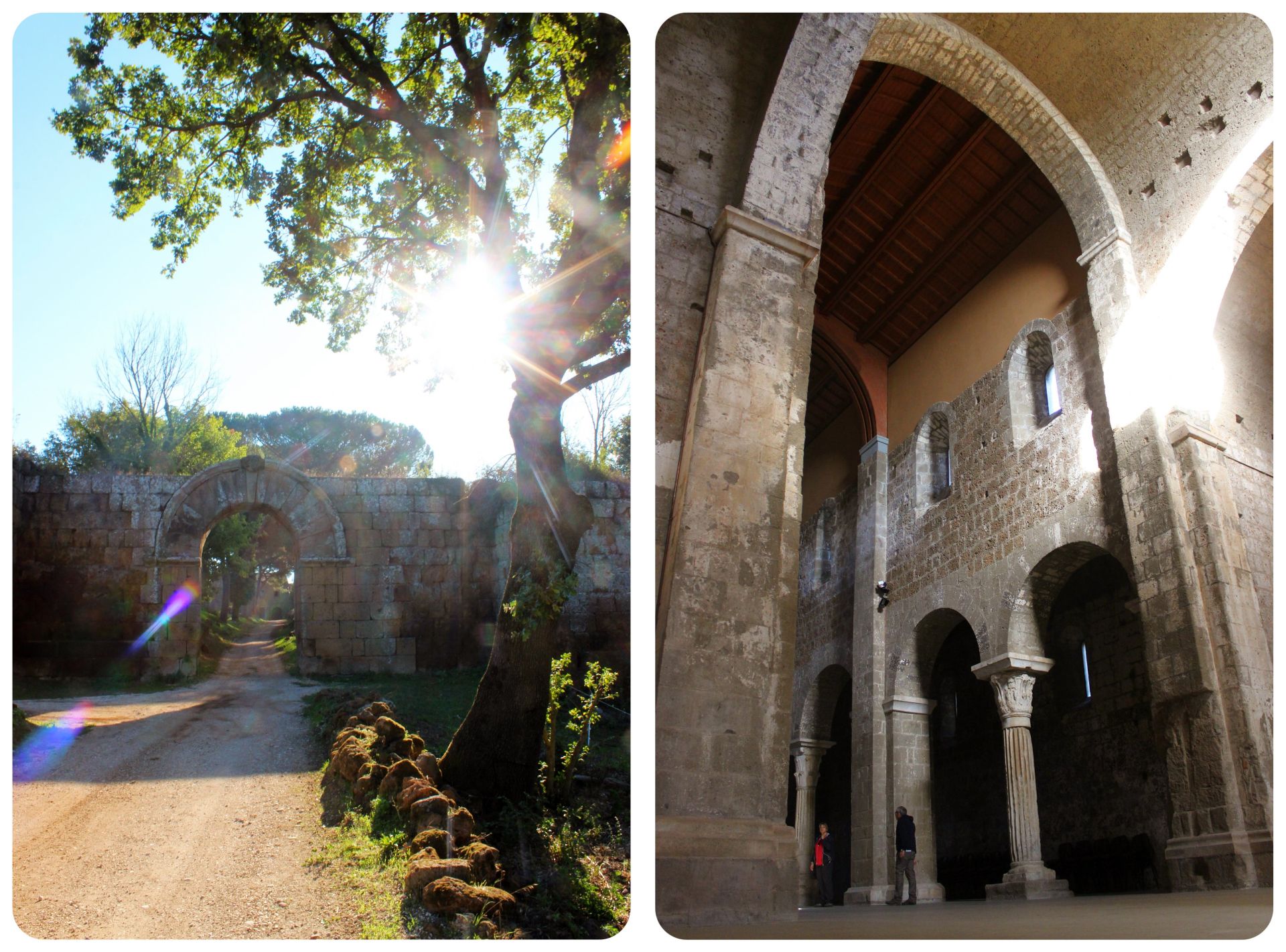
The Original Via Amerina: Walking on a Roman Road
After that, we continued our Via Amerina hike on one of the best known parts of the ancient trade route: Cavo degli Zucchi, a stretch of the road that is flanked by a series of tombs which are carved directly out of the tall tuff cliff.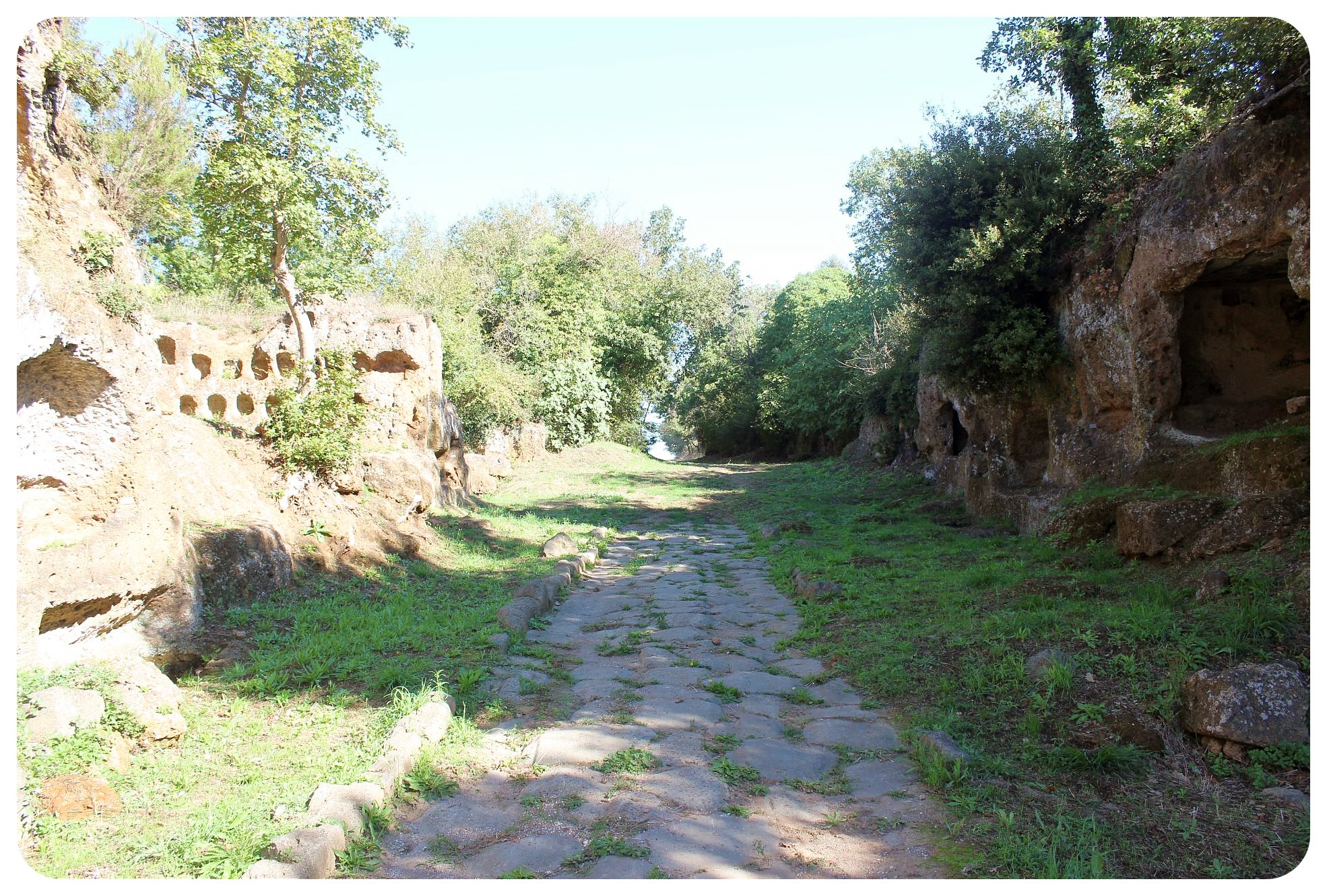 This part of the road has been excavated over the past 30+ years, uncovering the original basalt rocks that were put down by the Romans to pave the road. The exposed road is so well preserved that you can even see imprints from the wagons that were rolling down the Via Amerina hundreds of years ago.
This part of the road has been excavated over the past 30+ years, uncovering the original basalt rocks that were put down by the Romans to pave the road. The exposed road is so well preserved that you can even see imprints from the wagons that were rolling down the Via Amerina hundreds of years ago.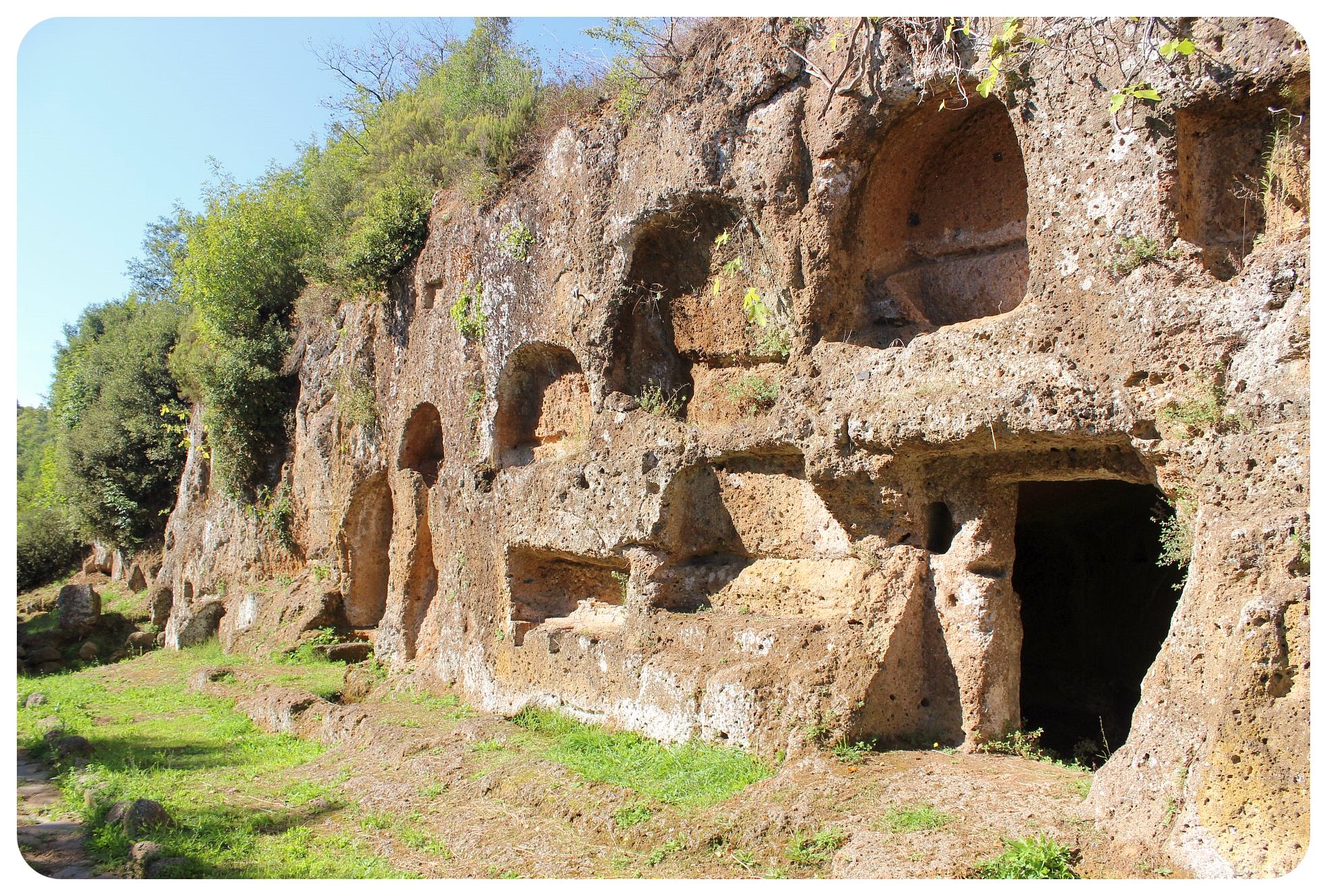 The cliffs that line the road for about 1.3 miles (2 kilometers) house 196 graves between Cavo degli Zucchi and Cava Foce Tre Ponti (also known as Necropoli dei Tre Ponti). This area is known to be inhabited by the Falisci, an ethnic group said to have been of Greek origin, who also inhabited Falerii and Falerii Novi.
The cliffs that line the road for about 1.3 miles (2 kilometers) house 196 graves between Cavo degli Zucchi and Cava Foce Tre Ponti (also known as Necropoli dei Tre Ponti). This area is known to be inhabited by the Falisci, an ethnic group said to have been of Greek origin, who also inhabited Falerii and Falerii Novi.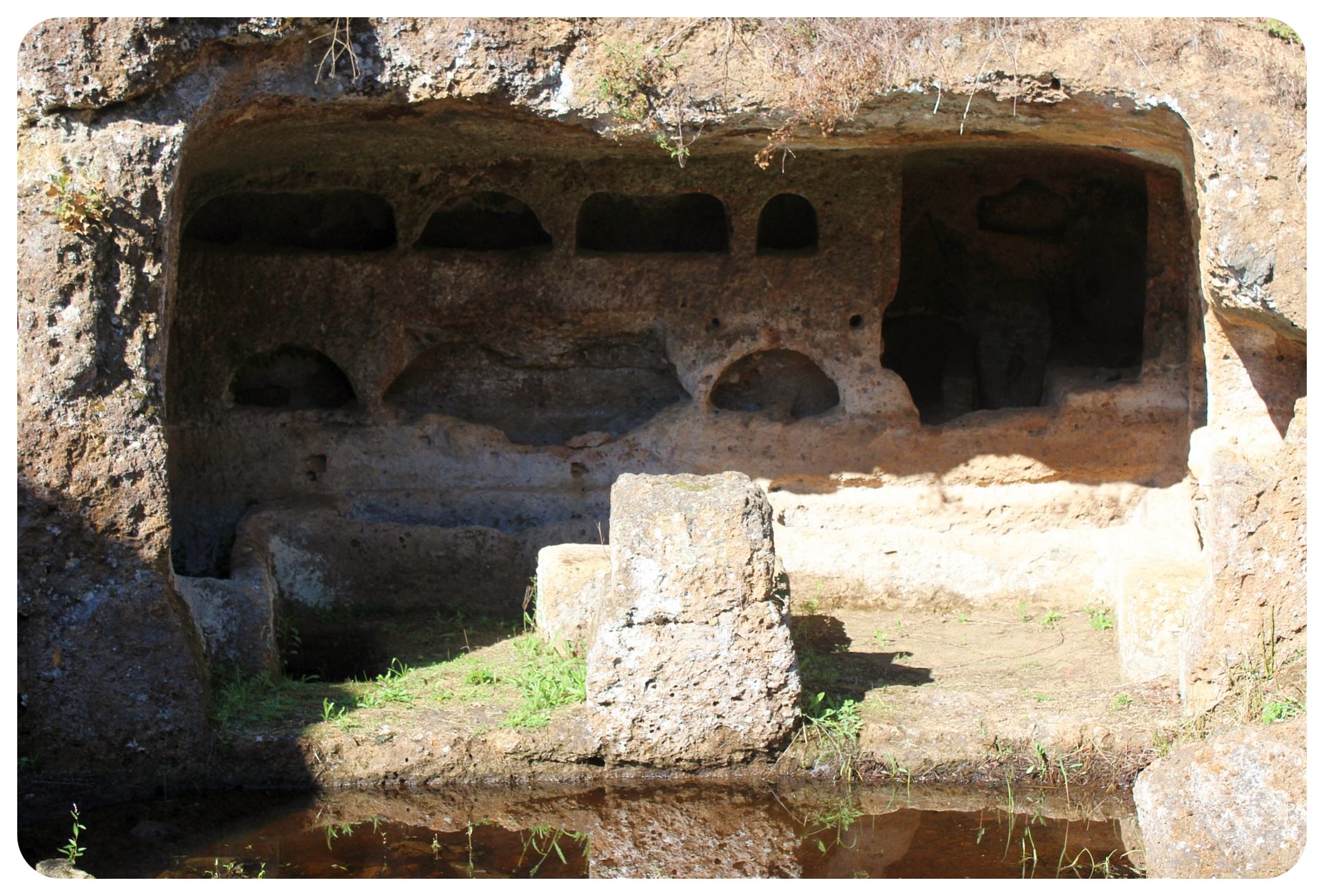 Before reaching Nepi, we stopped at Castel Sant’Elia, a small town that sits on the ridge of the Suppetonia Valley, a gorge that winds between Civita Castellana and Nepi, up to 656 feet (200 meters) deep and 2,300 feet (700 meters) wide. The Basilica, a medieval church built into the cliff over an ancient temple of Diana, features several mosaics and frescoes that are worth peeking inside for.
Before reaching Nepi, we stopped at Castel Sant’Elia, a small town that sits on the ridge of the Suppetonia Valley, a gorge that winds between Civita Castellana and Nepi, up to 656 feet (200 meters) deep and 2,300 feet (700 meters) wide. The Basilica, a medieval church built into the cliff over an ancient temple of Diana, features several mosaics and frescoes that are worth peeking inside for.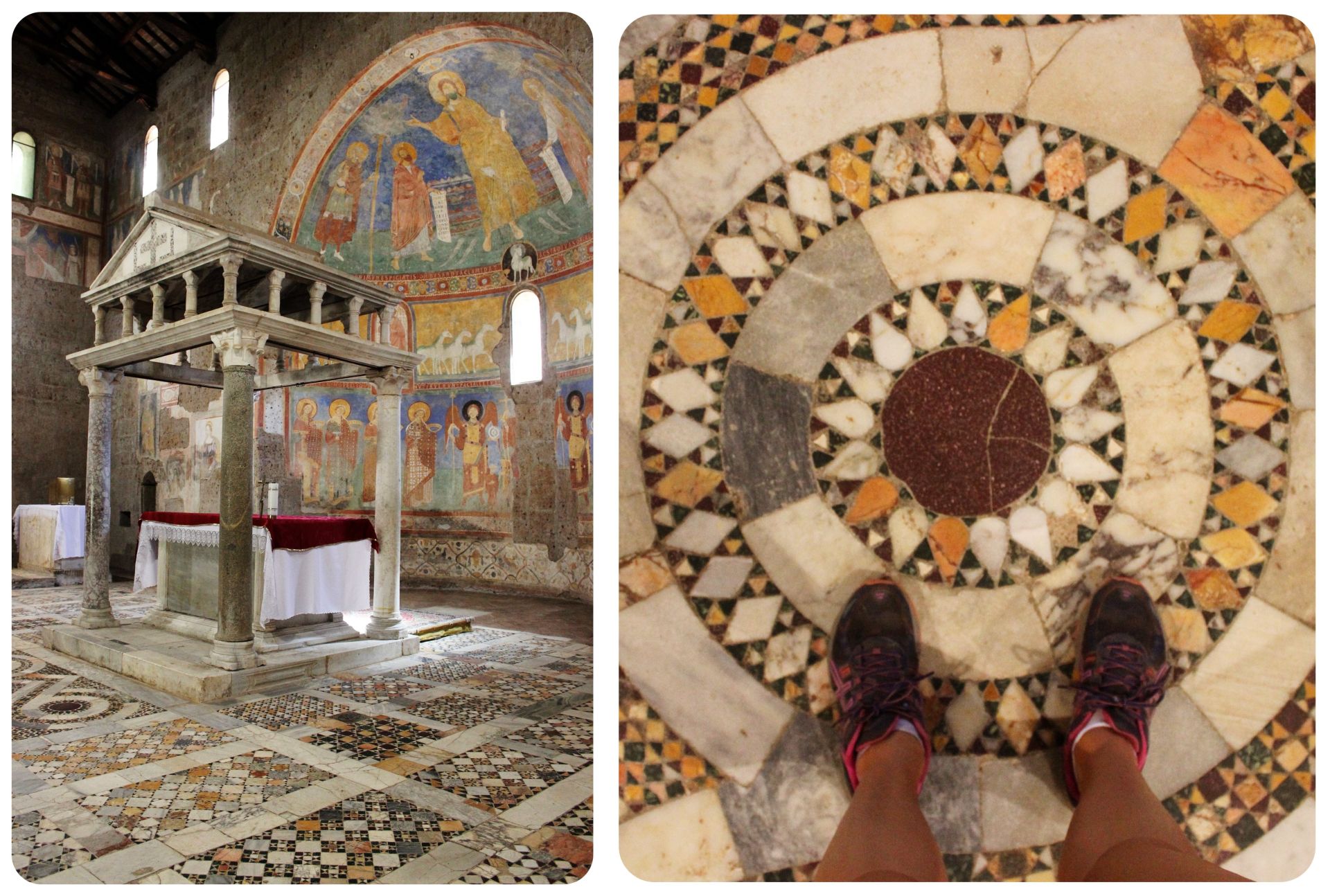 We made our way up the mountain to the top of the cliff, where we found an old monastery, the Sanctuary of Santa Maria ad Rupes, which houses the Shrine of St Maria ‘ad Rupes’. The shrine is connected to the surface by a tunnel by 144 steps carved by hand by a local hermit, an endeavor that took him 14 years to finish.
We made our way up the mountain to the top of the cliff, where we found an old monastery, the Sanctuary of Santa Maria ad Rupes, which houses the Shrine of St Maria ‘ad Rupes’. The shrine is connected to the surface by a tunnel by 144 steps carved by hand by a local hermit, an endeavor that took him 14 years to finish.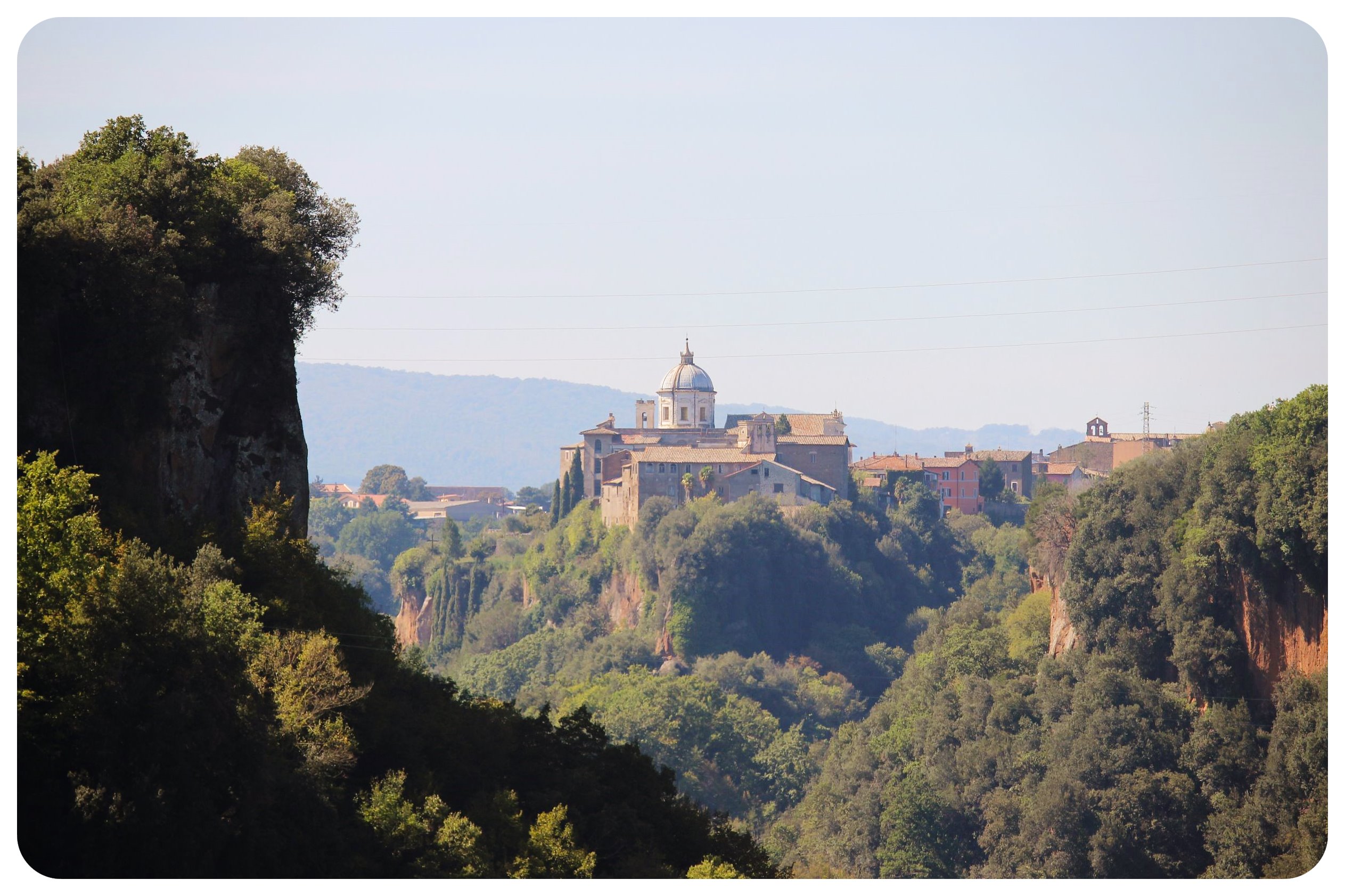
Catacombs and a Fortress in Nepi
And then we arrived in Nepi, another small medieval town with cobblestone streets and a 12th century cathedral, where there were two other sights worth stopping for, the first being Castello Borgia. We were able to climb to the top of one of the circular towers of this 16th century fortress, an effort that was rewarded with breathtaking views over the city and the surrounding countryside, including the Monte Sorrate mountain ridge.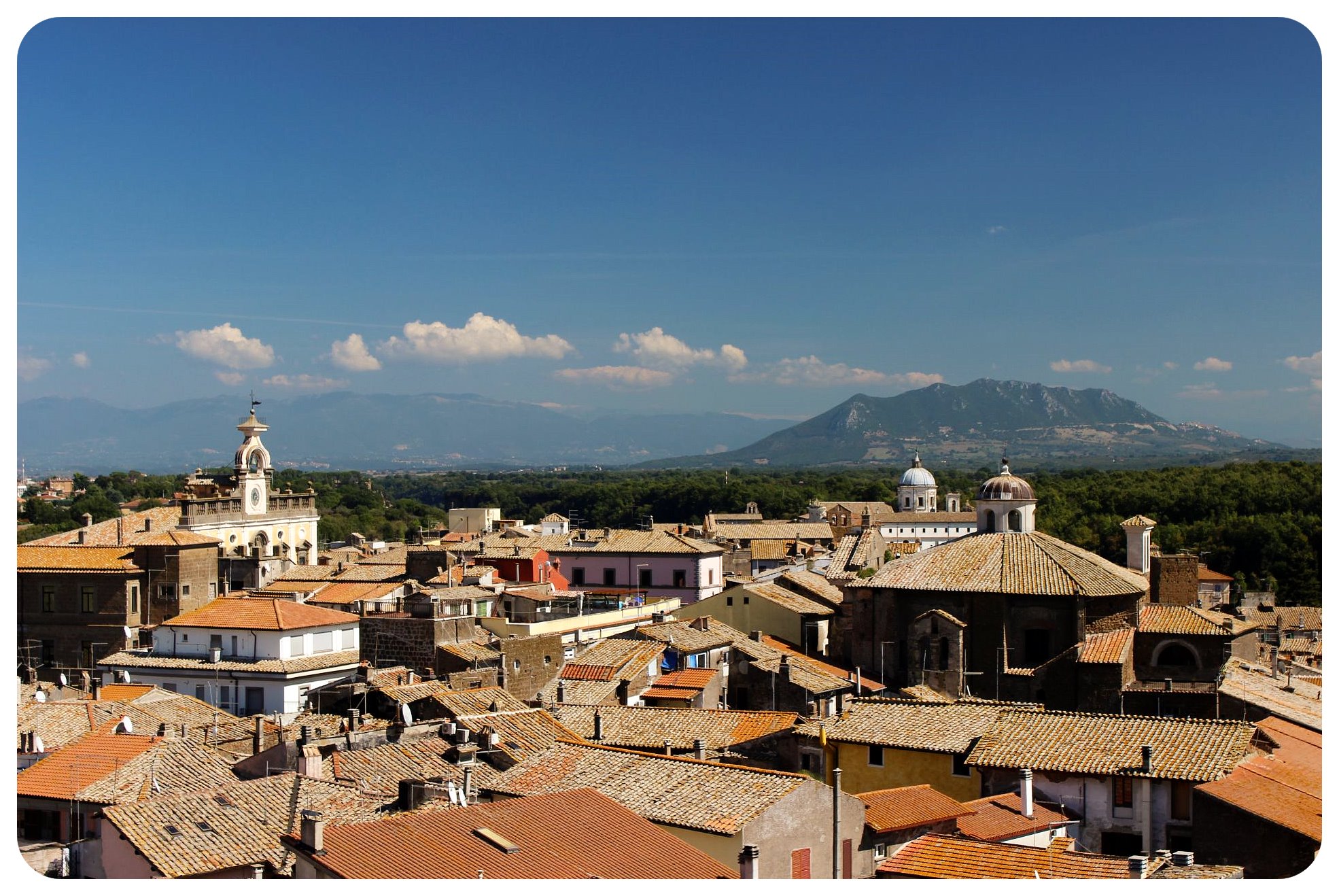 The other unmissable sight in Nepi is the Santa Savinilla Catacombs, an underground cemetery that dates back to the 5th century. The excavated graves are exceptionally well preserved, some of them still housing the bones and skulls of the deceased.
The other unmissable sight in Nepi is the Santa Savinilla Catacombs, an underground cemetery that dates back to the 5th century. The excavated graves are exceptionally well preserved, some of them still housing the bones and skulls of the deceased.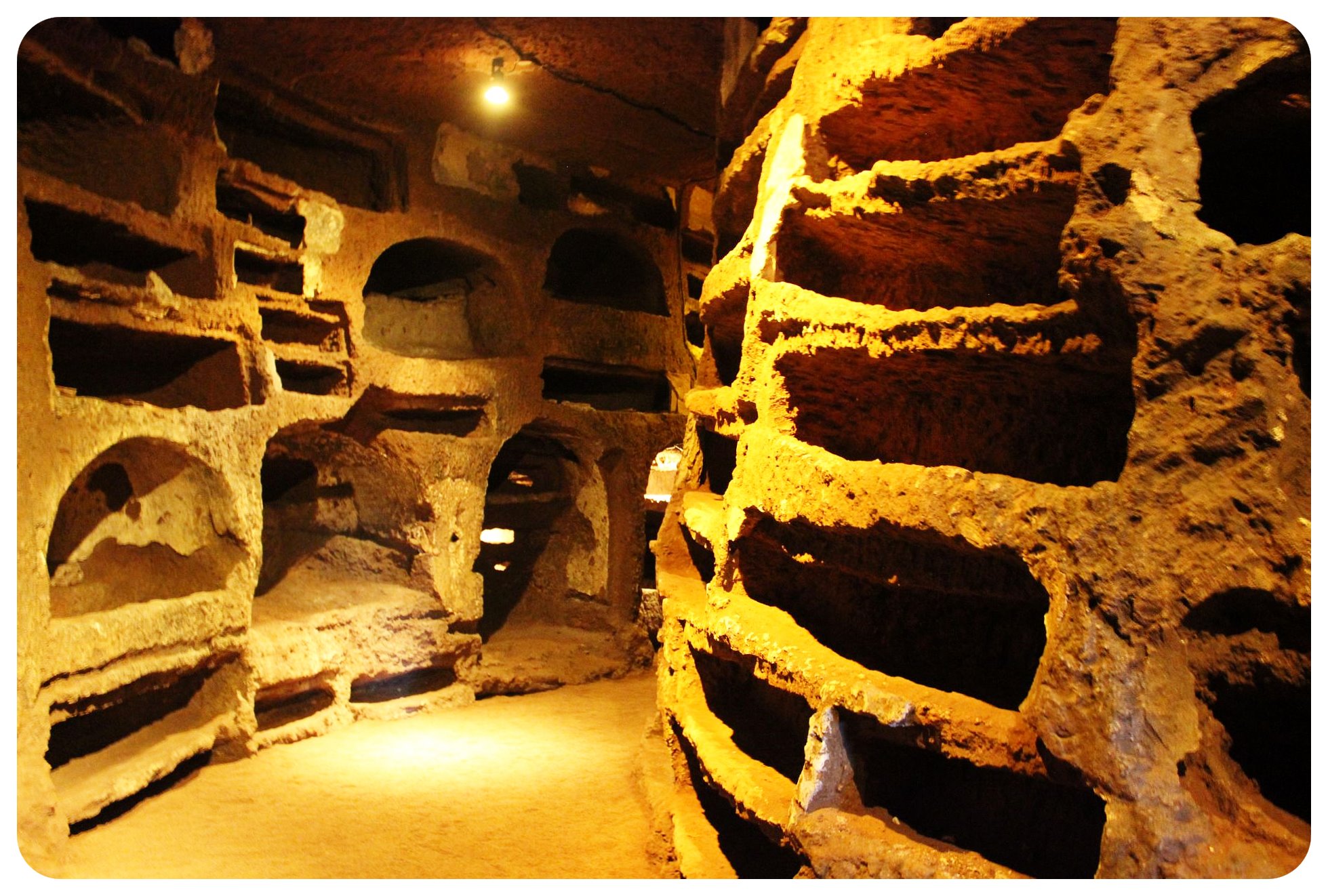 I’ve seen a number of catacombs throughout Europe, but Santa Savinilla, albeit small, was among the most impressive underground graveyards I have been to.
I’ve seen a number of catacombs throughout Europe, but Santa Savinilla, albeit small, was among the most impressive underground graveyards I have been to.
Calcata: Italy’s Most Artsy Village
After our afternoon in Nepi, we ventured off the path, away from the Via, and made a little detour to Calcata, another small hilltop village that is close enough to Rome to visit on a day trip, reminding us that we were not far from our final destination now.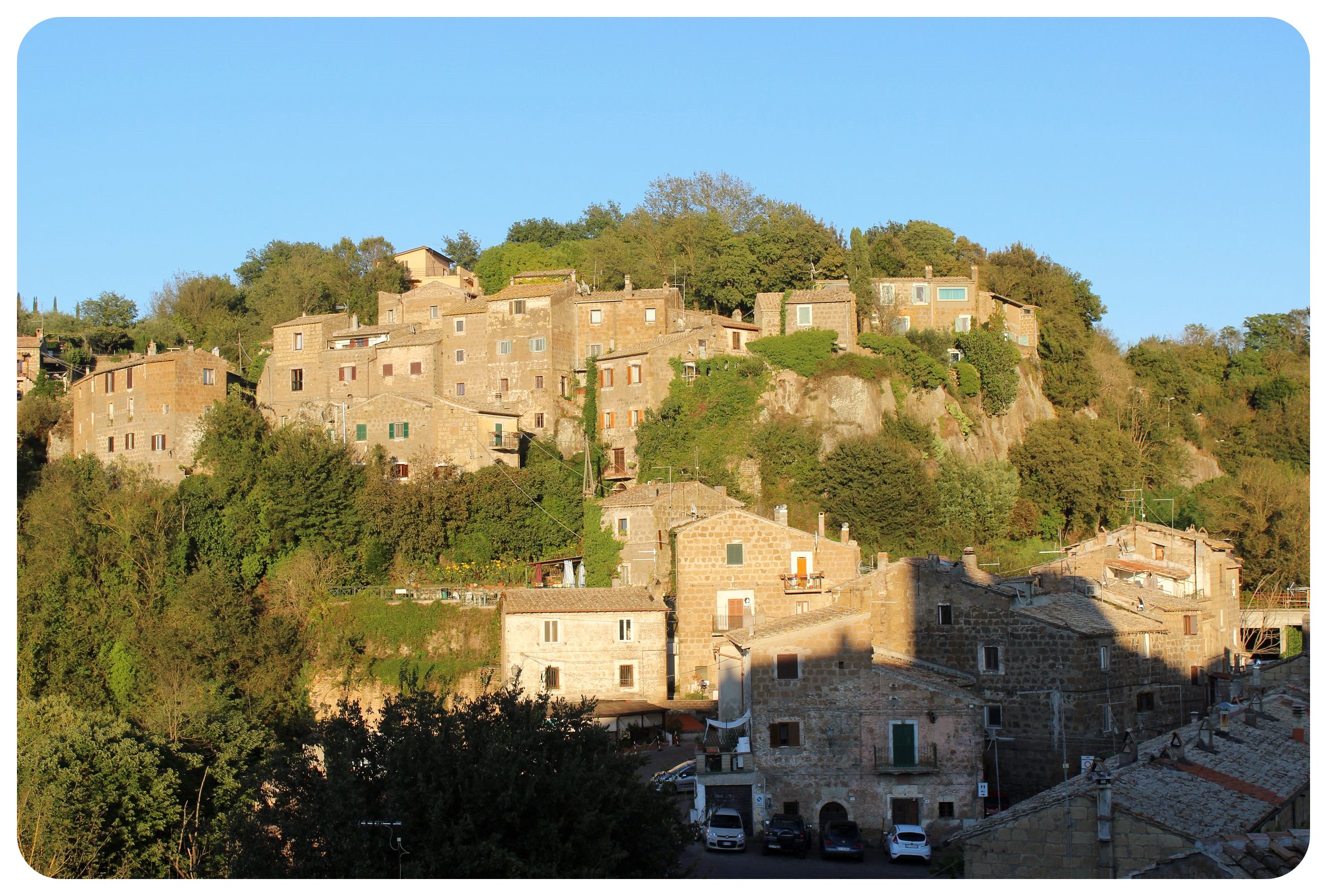 I fell in love with the village the minute it came into sight: a tiny fortified settlement perched atop a stump of volcanic rock, a small castle jutting out of the stone roofs of the medieval houses, surrounded by lush green forest on all sides.
I fell in love with the village the minute it came into sight: a tiny fortified settlement perched atop a stump of volcanic rock, a small castle jutting out of the stone roofs of the medieval houses, surrounded by lush green forest on all sides.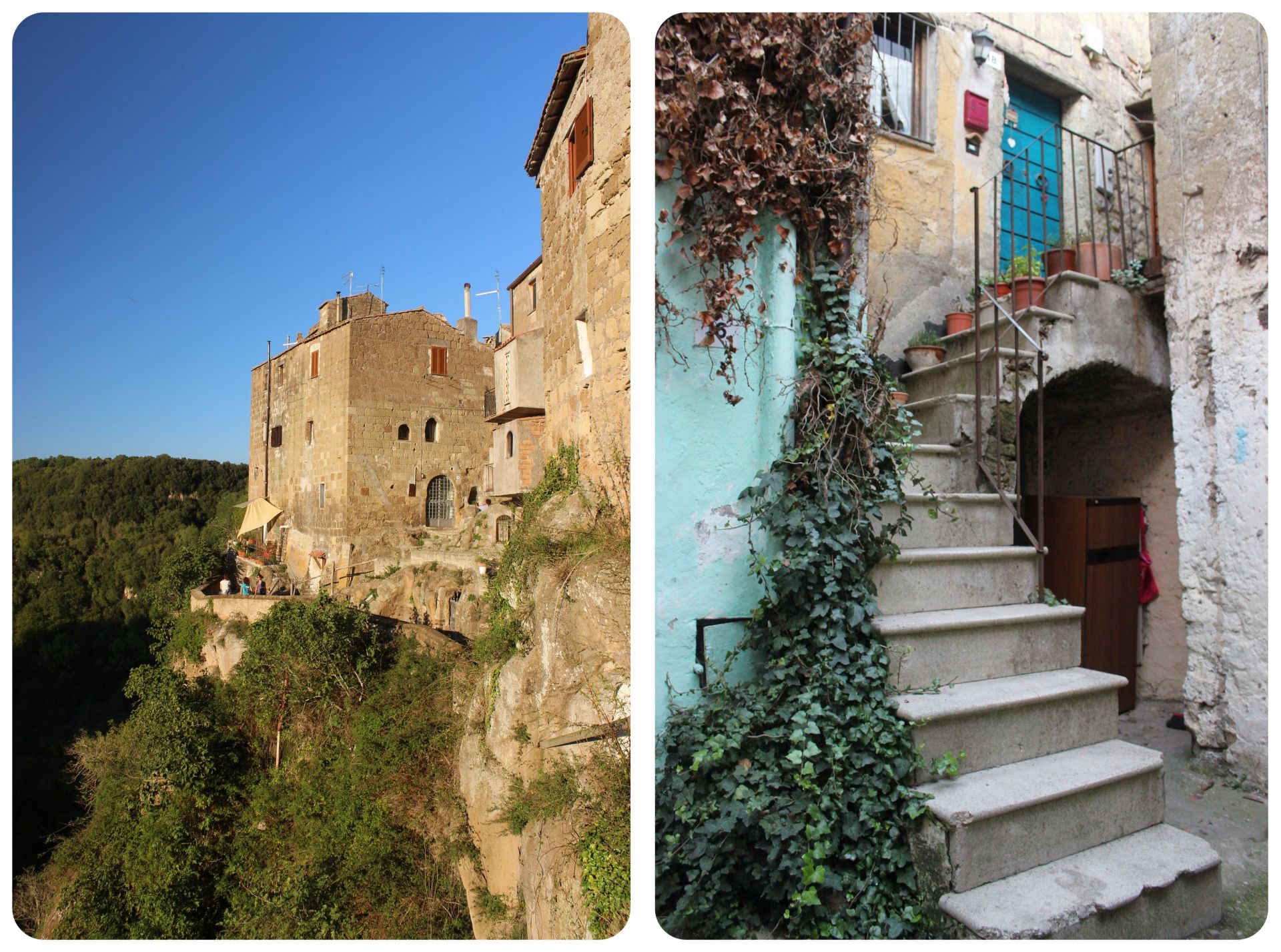 Calcata almost ended up as a ghost town when the Italian government declared the village as unsafe in the 1930s, saying the cliffs it was sitting on were crumbling. The majority of the people who lived in Calcata moved half a mile up the road, where they built a new town, Calcata Nuova, which left the village nearly deserted.
Calcata almost ended up as a ghost town when the Italian government declared the village as unsafe in the 1930s, saying the cliffs it was sitting on were crumbling. The majority of the people who lived in Calcata moved half a mile up the road, where they built a new town, Calcata Nuova, which left the village nearly deserted.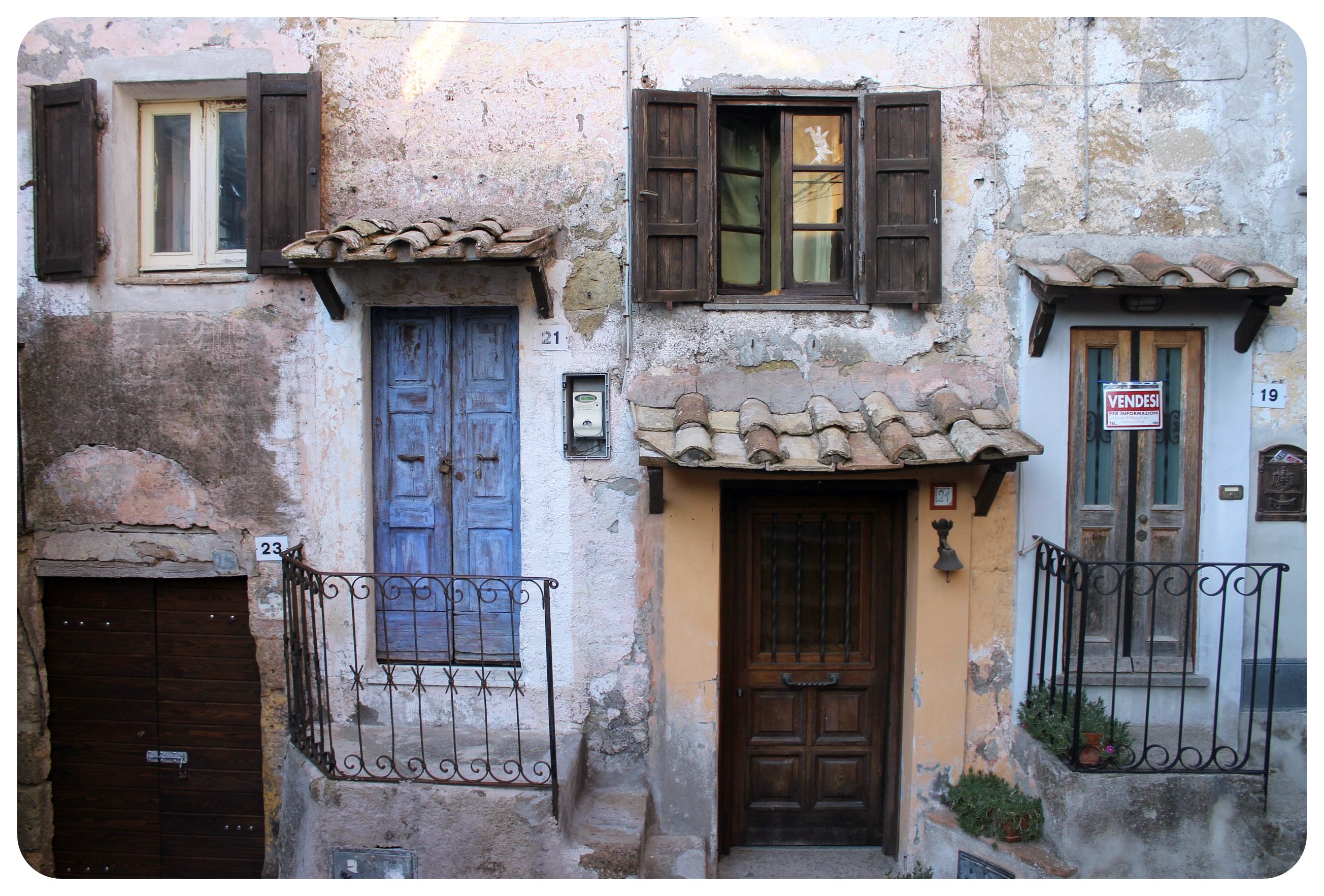 In the 60s and 70s artists and hippies discovered the little village, drawn by the mythical energy that supposedly emanates from the volcanic stump it sits on, but also by the fairy-tale like feel and the enchanting atmosphere in the village with its crooked streets and maze of cobblestone alleyways.
In the 60s and 70s artists and hippies discovered the little village, drawn by the mythical energy that supposedly emanates from the volcanic stump it sits on, but also by the fairy-tale like feel and the enchanting atmosphere in the village with its crooked streets and maze of cobblestone alleyways.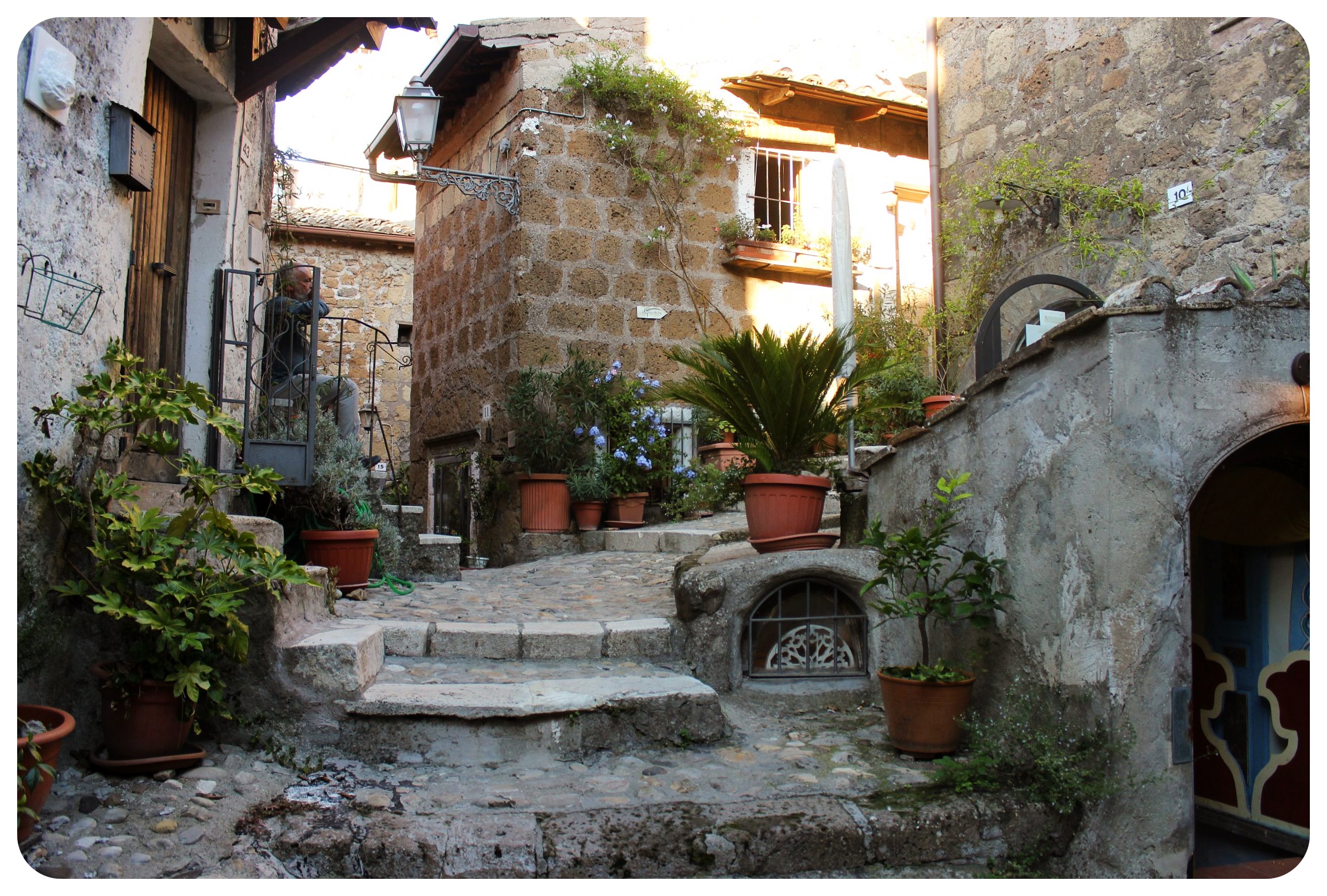 Today, the village is home to over 100 artists, New Age types who are selling jewelry, display their paintings and sculptures in little galleries, and run charming little tea and coffee shops. Calcata gets overrun by day trippers from Rome and other nearby towns, especially on weekends, and it is easy to see why – I could’ve wandered the little streets for hours, visiting all the tiny galleries, gorging on homemade cakes while enjoying the views over the surrounding countryside. If I were to go back to Calcata, I would stay in one of the stone houses right in town for a couple of nights, or even take up a month-long artists’ residency.
Today, the village is home to over 100 artists, New Age types who are selling jewelry, display their paintings and sculptures in little galleries, and run charming little tea and coffee shops. Calcata gets overrun by day trippers from Rome and other nearby towns, especially on weekends, and it is easy to see why – I could’ve wandered the little streets for hours, visiting all the tiny galleries, gorging on homemade cakes while enjoying the views over the surrounding countryside. If I were to go back to Calcata, I would stay in one of the stone houses right in town for a couple of nights, or even take up a month-long artists’ residency.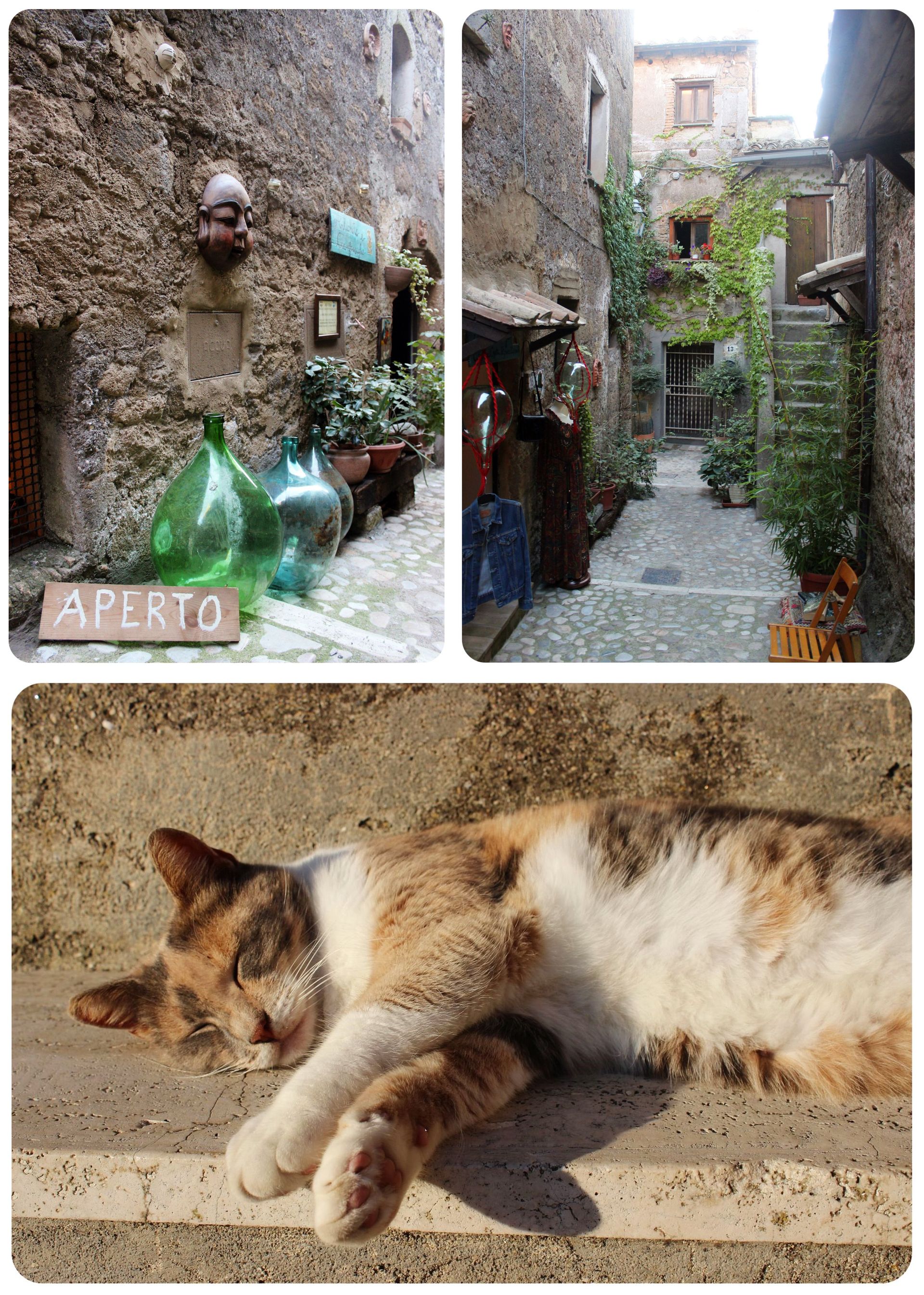 This detour left me feel invigorated, feeding me enough energy for the last part of the trek. Sadly, due to time constraints, I didn’t get to walk the entire last part from Nepi to Rome via Campagno di Roma (17km) and La Storta (20km from Campagno di Roma), with a final 12.5 mile (20 kilometers) day that eventually brings you to Rome and Piazza St Pietro (St Peter’s Square).
This detour left me feel invigorated, feeding me enough energy for the last part of the trek. Sadly, due to time constraints, I didn’t get to walk the entire last part from Nepi to Rome via Campagno di Roma (17km) and La Storta (20km from Campagno di Roma), with a final 12.5 mile (20 kilometers) day that eventually brings you to Rome and Piazza St Pietro (St Peter’s Square).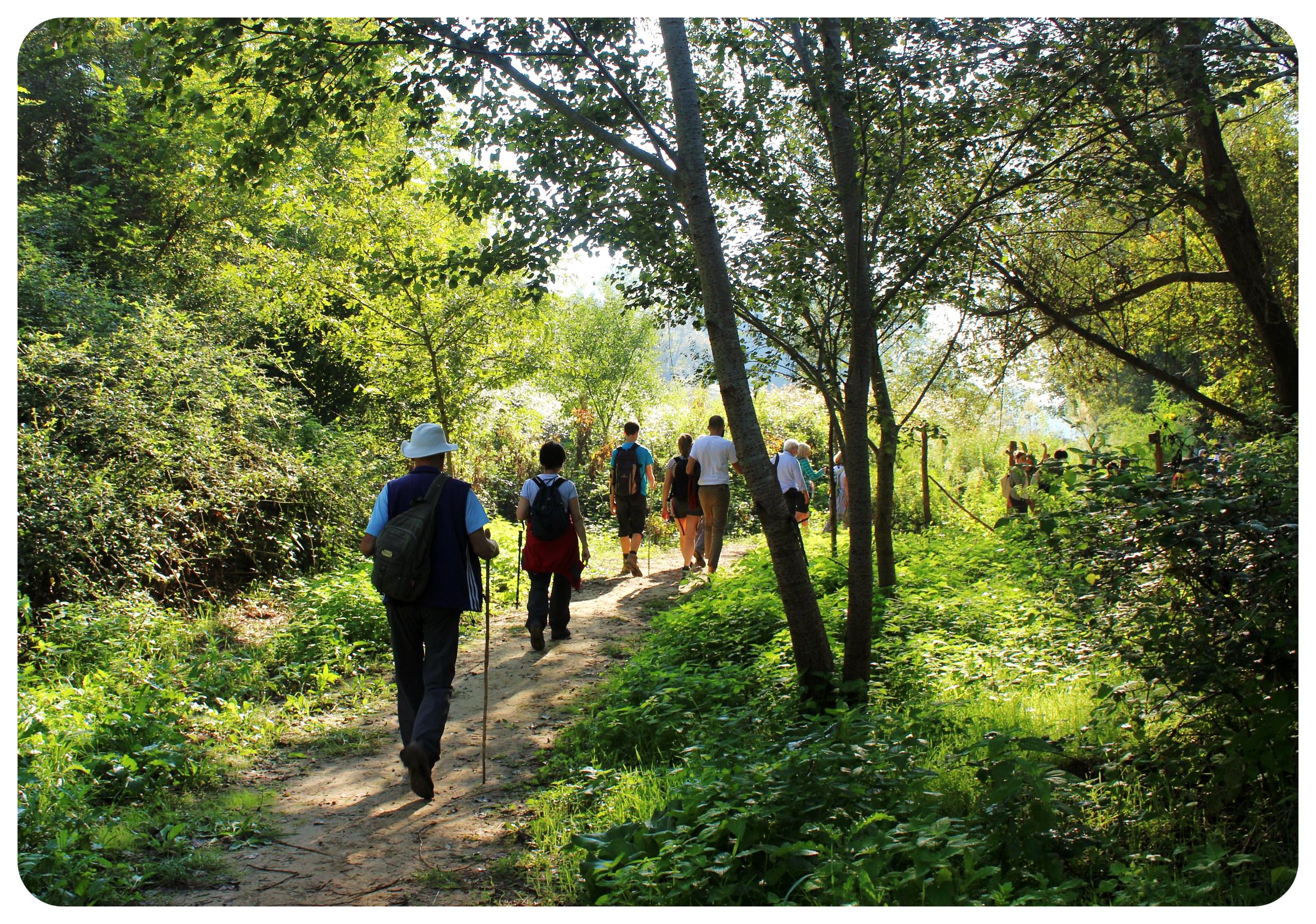
The Final Stretch to Rome
Instead, we started at the trail head for the alternative route which leads through the Insugherata Nature Park. Walking this way means you are not following the traffic-heavy Via Cassia, which meets the Via Amerina on its final stretch to Rome, alternatively walking through beautiful nature for 4 miles (6 kilometers) right into Rome, where the path rejoins the original route near Piazza Igea.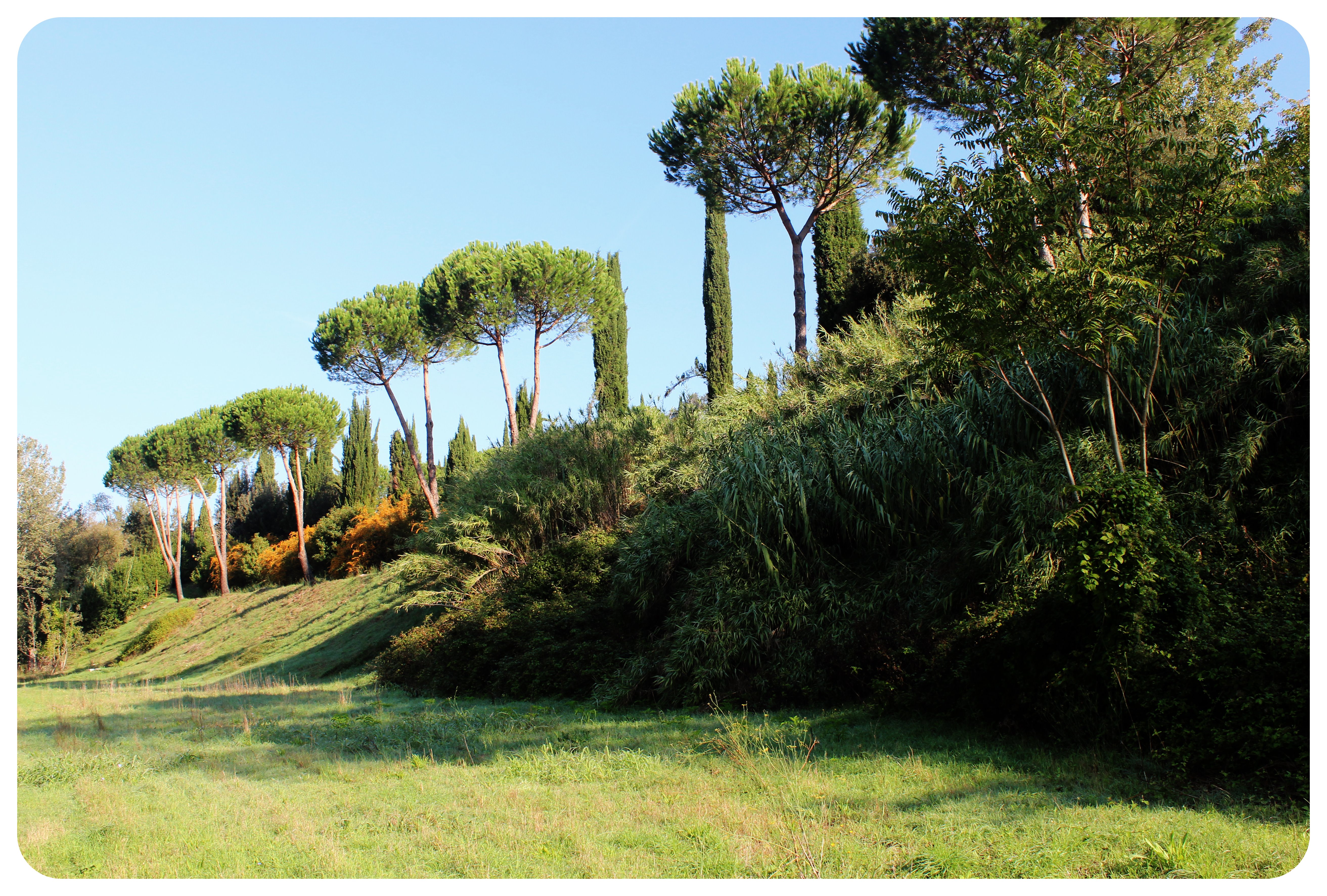 The entire walk is 8.7 miles (14 kilometers) and was very pleasant – I preferred walking through the park rather than following the road, especially because I knew we would be walking through the busy streets of Rome later on.
The entire walk is 8.7 miles (14 kilometers) and was very pleasant – I preferred walking through the park rather than following the road, especially because I knew we would be walking through the busy streets of Rome later on.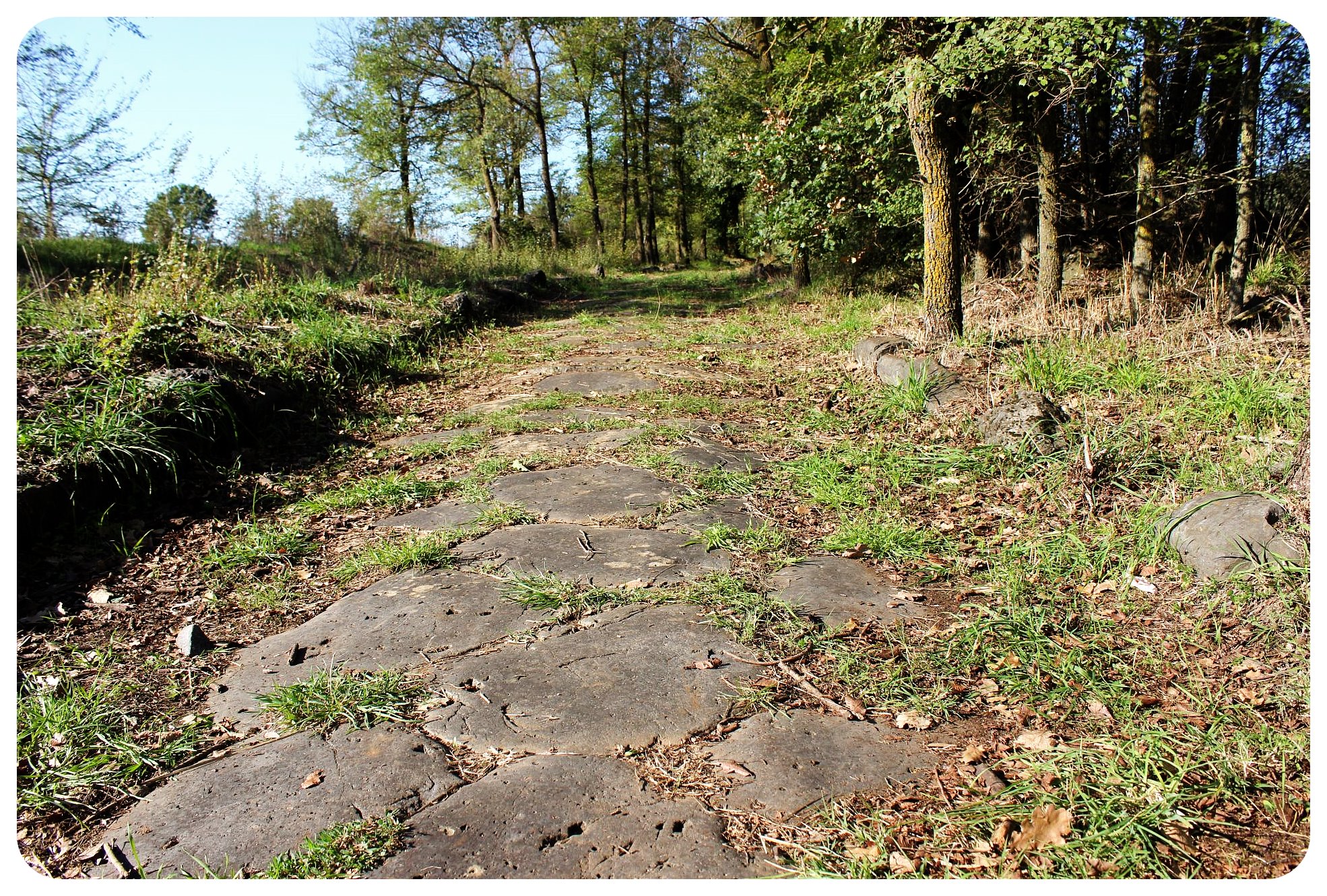
The Papal Audience in St Peter’s Square
Getting a first glimpse of St Peter’s Cathedral from Monte Mario was spectacular – at last seeing that the end was near, and that we had nearly reached our final destination.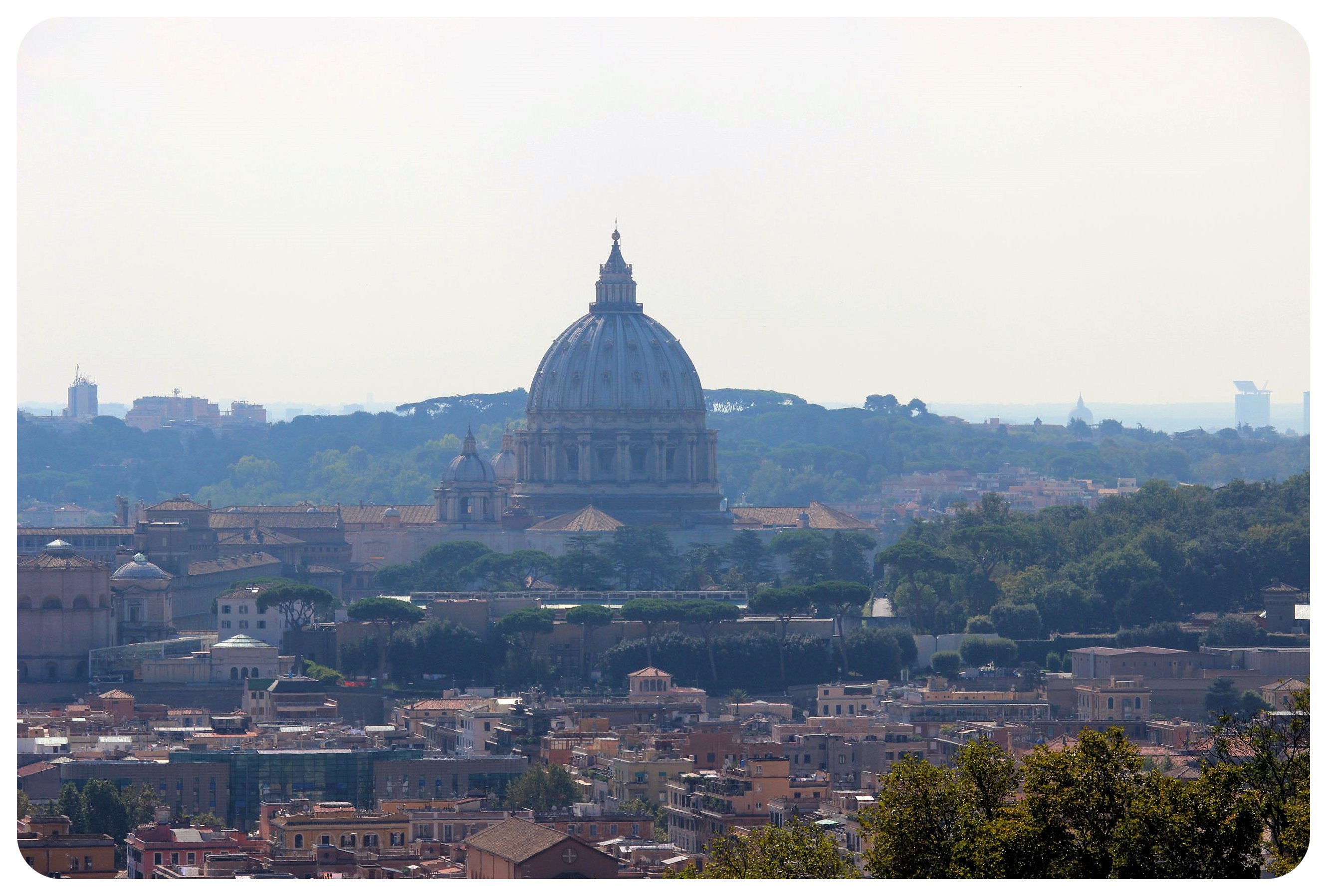 Most pilgrims plan their arrival in Rome for a Tuesday so that they can attend the papal audience that is held in St Peter’s Square every Wednesday. Even as a non-religious person, I couldn’t deny the special aura in the square, filled with thousands of pilgrims from all over the world who were listening to the Pope’s speech and receiving his apostolic blessing.
Most pilgrims plan their arrival in Rome for a Tuesday so that they can attend the papal audience that is held in St Peter’s Square every Wednesday. Even as a non-religious person, I couldn’t deny the special aura in the square, filled with thousands of pilgrims from all over the world who were listening to the Pope’s speech and receiving his apostolic blessing.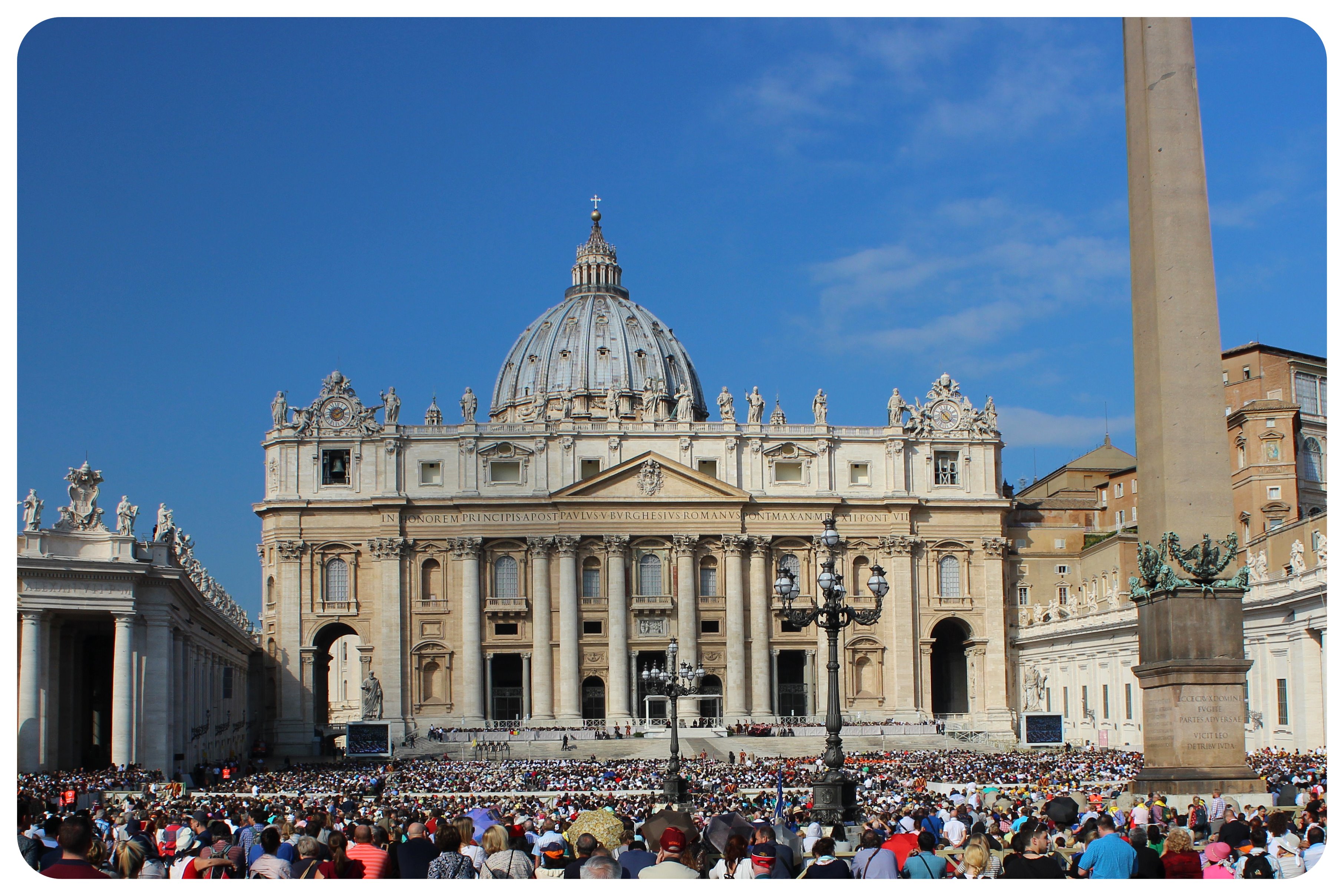 No matter if you are Catholic or not, ending a walk through Italy at the papal audience makes it feel even more extraordinary: you have done something that only very few people do. Going to Rome? Easy. But walking to Rome? An exceptional achievement.
No matter if you are Catholic or not, ending a walk through Italy at the papal audience makes it feel even more extraordinary: you have done something that only very few people do. Going to Rome? Easy. But walking to Rome? An exceptional achievement.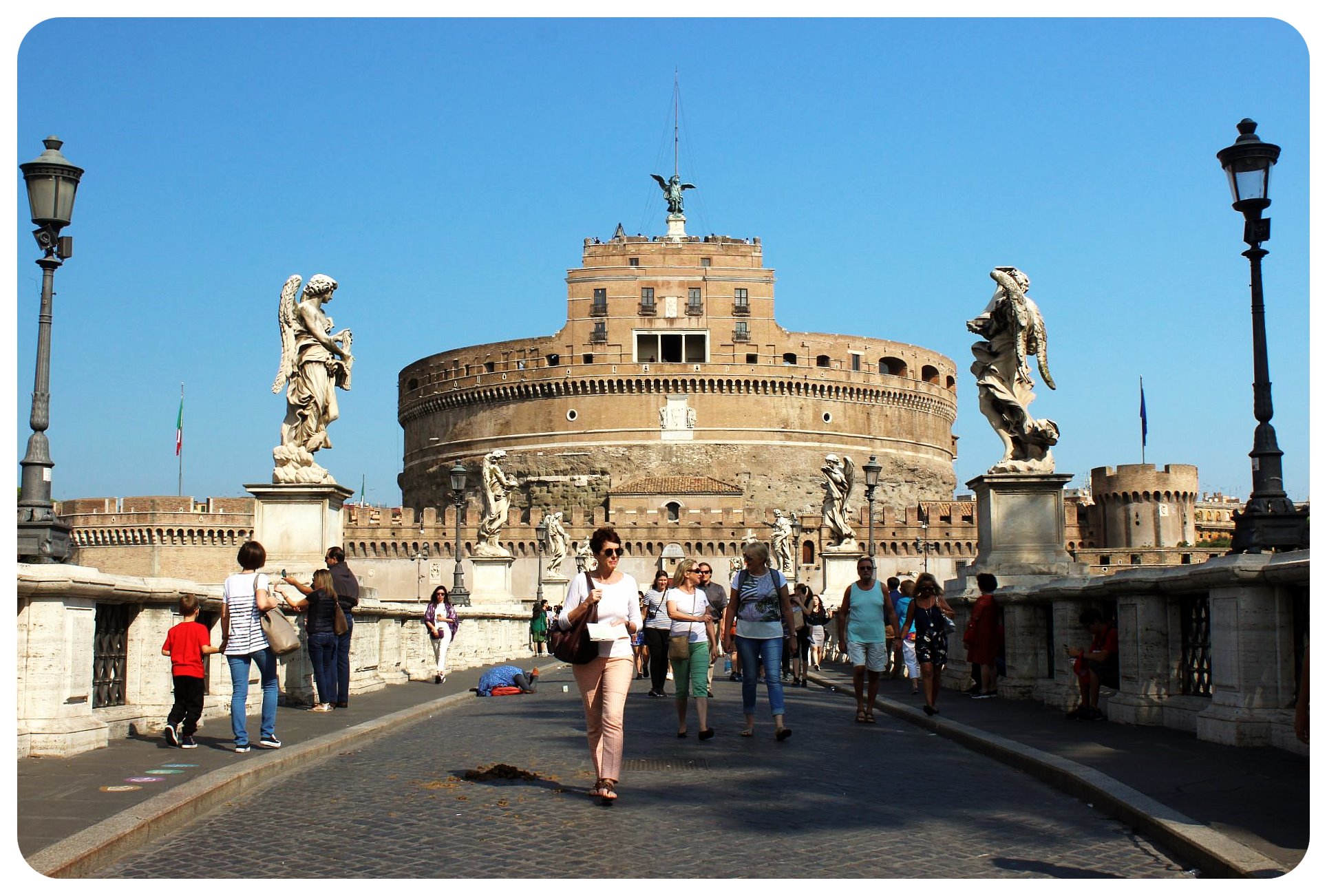
The Walk Continues: Wandering The Streets Of Rome
Most of my fellow hikers were tired from the long days of walking during the Via Amerina hike and skipped sightseeing in Rome, but I love this city so much, I couldn’t leave without spending at least one day in the city.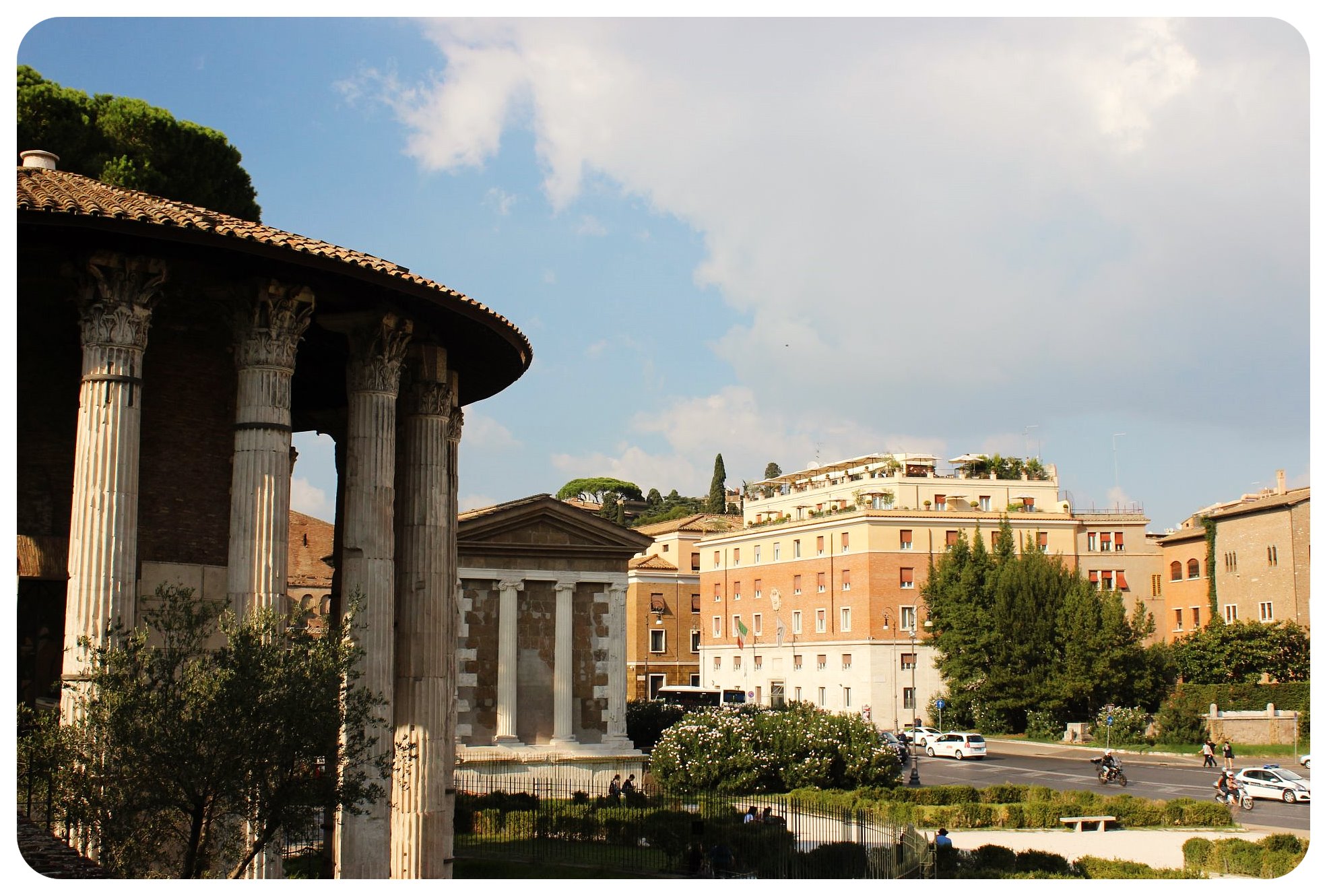 I wandered the streets of Trastevere, my favorite neighborhood, and revisited the majestic landmarks of the city that made such an impression on me when I came to Rome for the first time, back when I was a teenager – the Collosseum, the Pantheon, the Roman Forum and the Fontana di Trevi.
I wandered the streets of Trastevere, my favorite neighborhood, and revisited the majestic landmarks of the city that made such an impression on me when I came to Rome for the first time, back when I was a teenager – the Collosseum, the Pantheon, the Roman Forum and the Fontana di Trevi.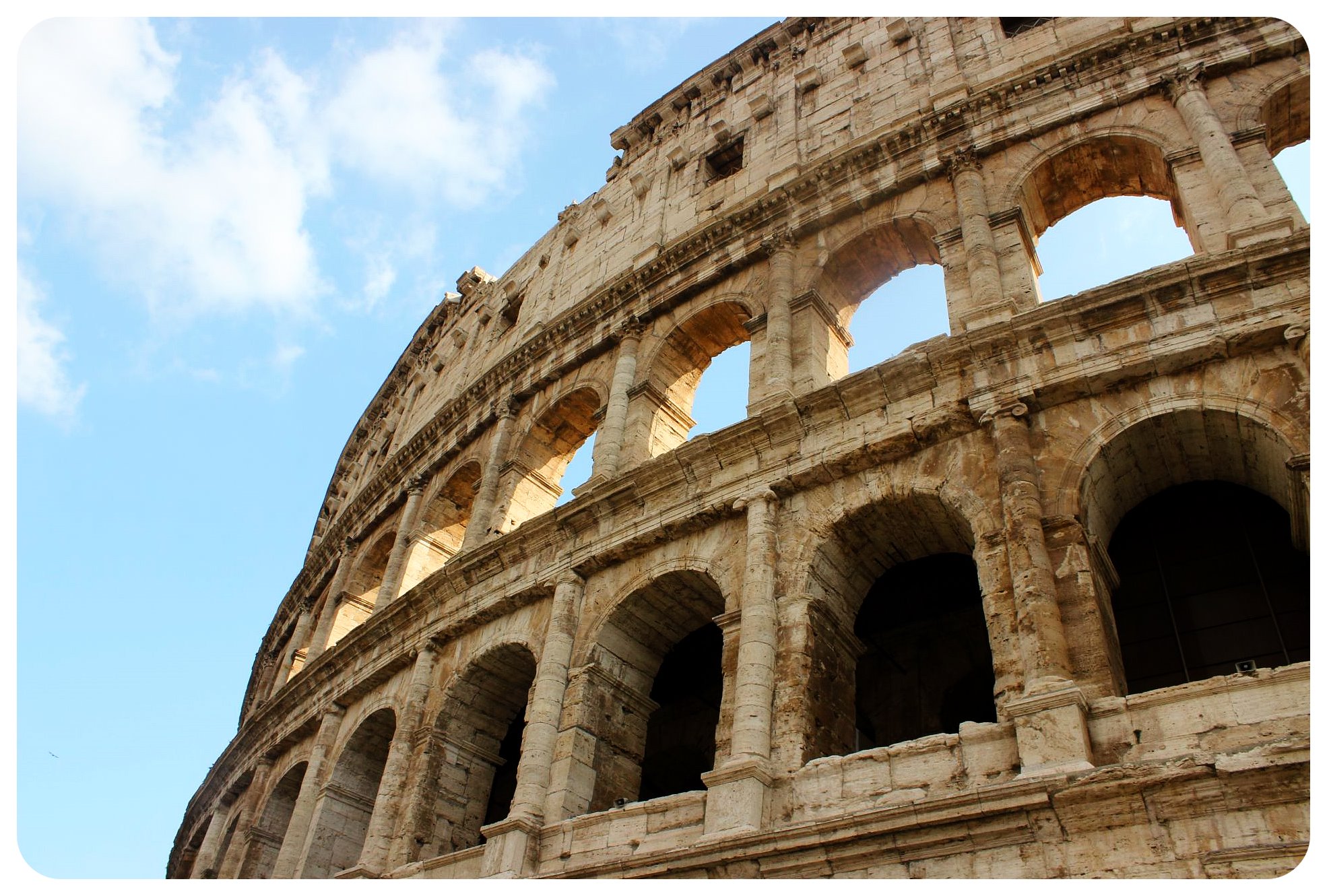 If you walk the Via Amerina or another pilgrims’ route and this is your first time in Rome, I recommend taking a rest day and then spending a few days exploring the city. Even though the walk is a journey in itself, your final destination is too sensational to be left out.
If you walk the Via Amerina or another pilgrims’ route and this is your first time in Rome, I recommend taking a rest day and then spending a few days exploring the city. Even though the walk is a journey in itself, your final destination is too sensational to be left out.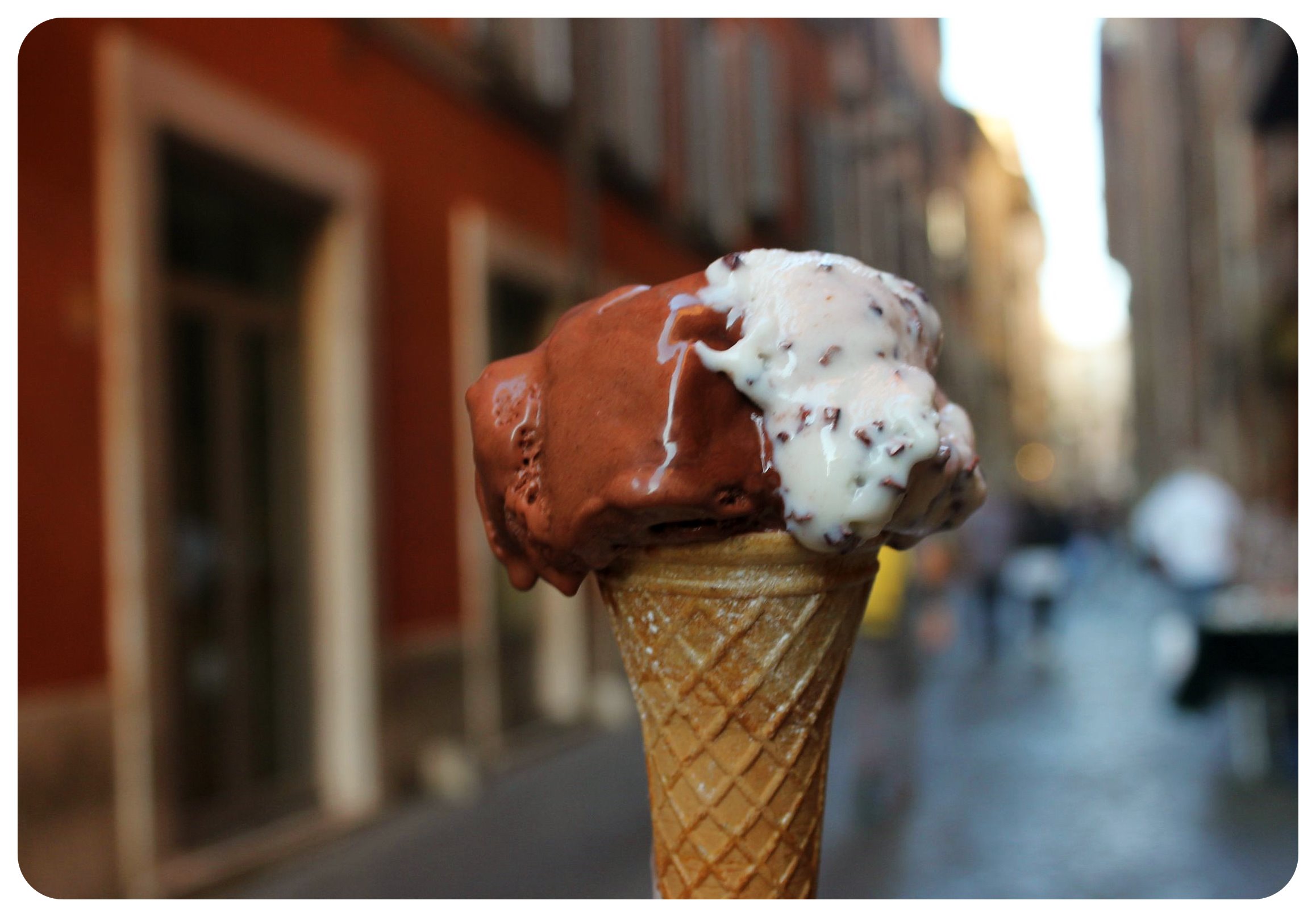 I could have spent another week in Rome, but sadly I was pressed for time. I threw a coin over my left shoulder at Trevi Fountain though, the one thing I’ve done on all my visits to Rome, because legend says that throwing a coin over your shoulder into the fountain guarantees a return to Rome.
I could have spent another week in Rome, but sadly I was pressed for time. I threw a coin over my left shoulder at Trevi Fountain though, the one thing I’ve done on all my visits to Rome, because legend says that throwing a coin over your shoulder into the fountain guarantees a return to Rome.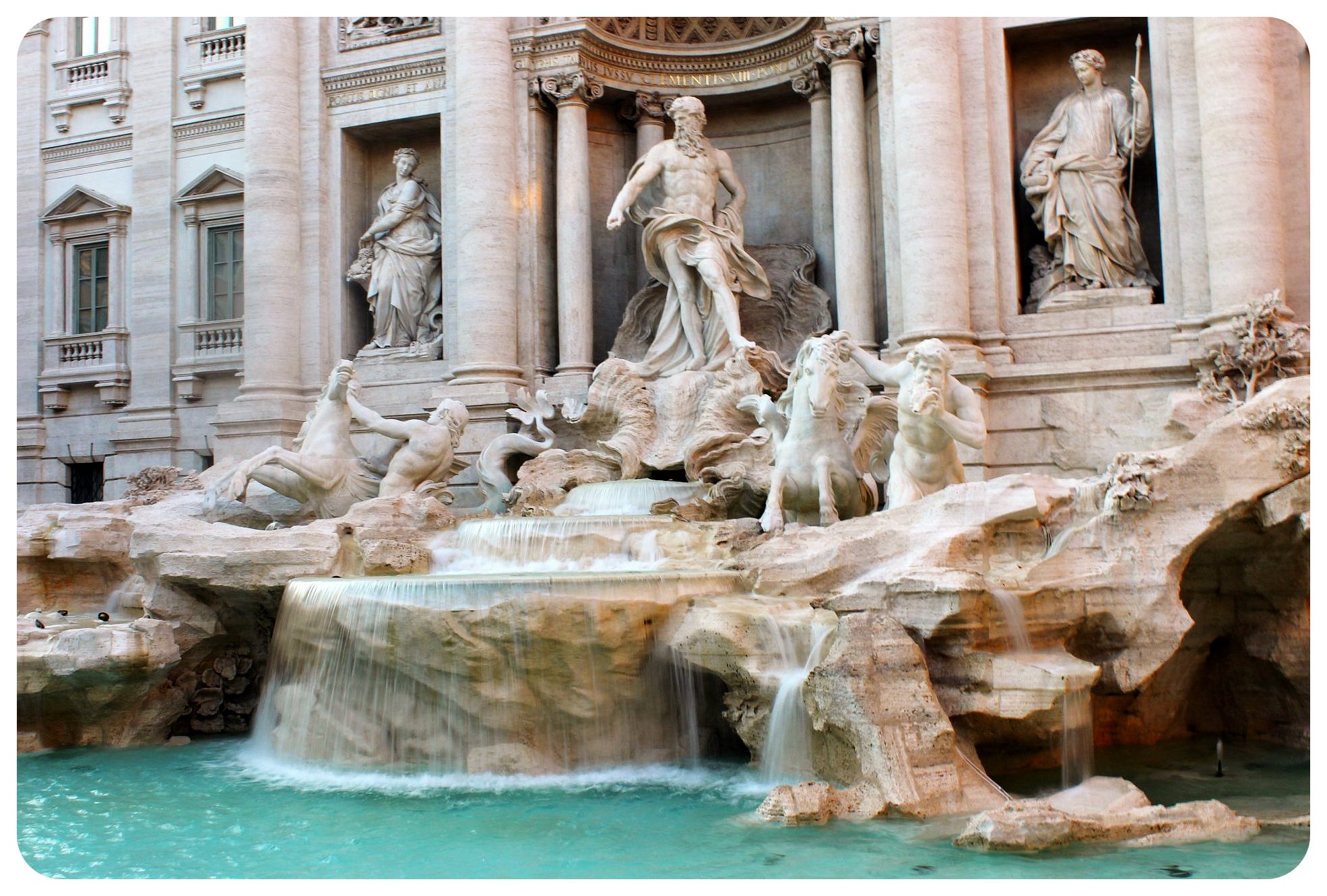 So far, it’s worked for me – I’ll be back.
So far, it’s worked for me – I’ll be back.
Do the Via Amerina hike as a day trip from Rome!
Hiking the Via Amerina independently takes a bit of courage, and takes a lot of planning. Because the Via Amerina isn’t as popular as the Camino de Santiago and other pilgrims routes, there’s just not as much information about it out there, especially in English. You’ll have to map out your daily stages precisely and make sure that there’s a B&B in each place you’re planning to spend the night in. Sadly, there’s no guidebook out there yet detailing this hike.
But if you’re intrigued by the Via Amerina hike after reading this, I have good news for you: it is possible to do the Via Amerina hike as a day trip from Rome and to get a taste of this ancient pilgrims’ route. Kelle Terre offers walking some of the best parts of the route, including walking on the original ancient basalt rocks, including transportation to and from Rome. You can find more information on this Via Amerina Day Trip from Rome here.
PIN IT!
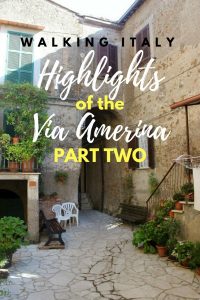

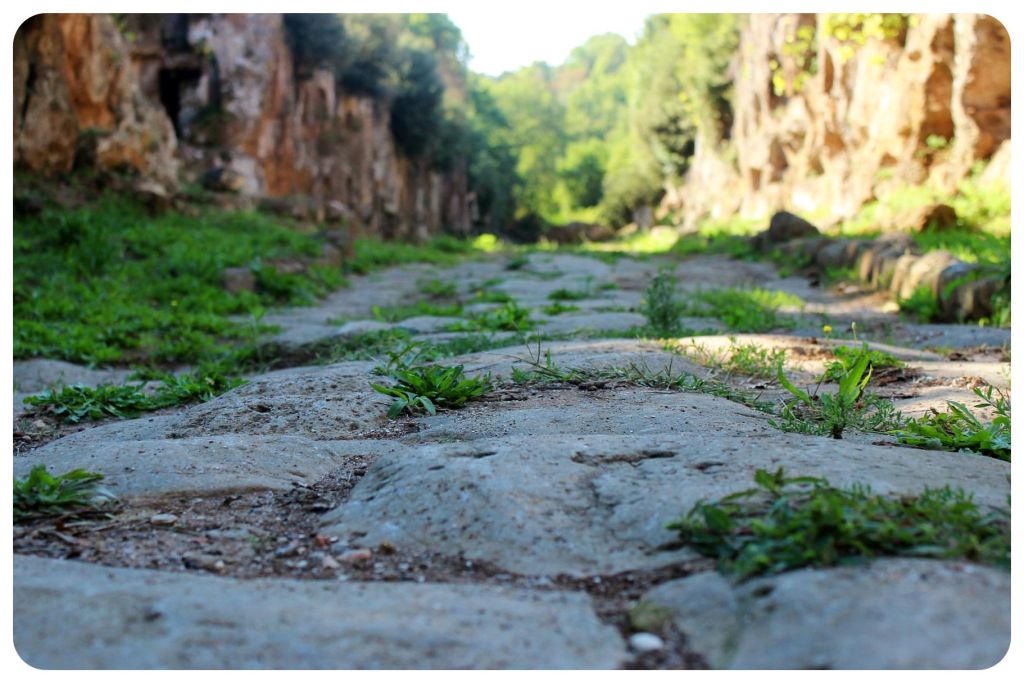
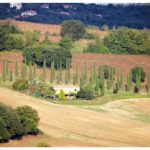


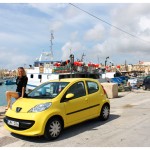
Ryan Smith
Friday 28th of April 2017
A nice post with many beautiful photos. The scene of Santa Savinilla Catacombs amazes me, to see a structure that old is still in good condition.
Thank you so much for your share
Walking through Italy: Via Amerina, Part II – Globetrotter Girls - Purple Roofs Gay Travel Blog | Purple Roofs Gay Travel Blog
Friday 3rd of February 2017
[…] By Dani – Full Story at Globetrotter Girls […]